Anicic
PARRAMATTA ROAD STUDENT HOUSING
1, Y1, Master of Architecture
George Anicic and Thomas Z. Li || Semester
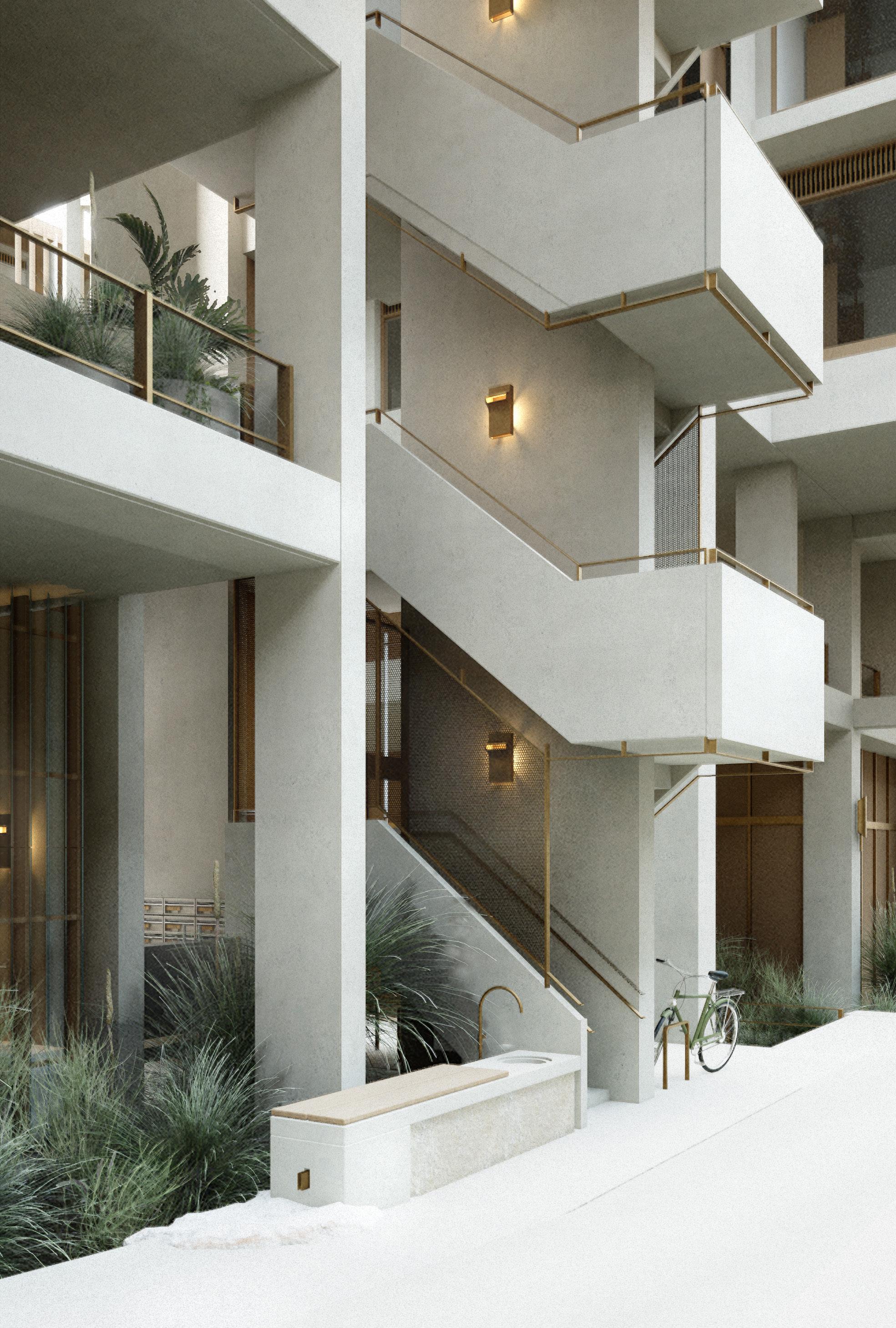
PROJECT STATEMENT
Introduction
The Parramatta Road Student Housing Complex sits nestled between the bustling Parramatta Road and the university campus beyond, and the idyllic, leafy green suburb of Forest Lodge. Taking the place of the former coroner’s office on 42-50 Parramatta Road, the site is bracketed by two blank brick walls of its neighboring buildings. A trapezoid area that gently slopes down towards Arundel Street is left for the development of a student housing complex of 360 units.
A Manifesto ... Perhaps
The development of this proposal revolves around the interrogation and response to three key questions.
First is what the responsibility of student housing is to its site and its community.
360 units are by no means an easy program to integrate harmoniously in the site like this but nevertheless, the primary is to create a building that is respectful in mass, and expression, as well as one that provides amenity to its surrounds. Only in this way can it establish a connection to community and landscape which is key for how the building can rest well within its site.
Therefore this proposal from an urban design perspective with ideas of ‘Country’ in mind aims to restore the natural topographic condition to the site, creating a gently sloping hill, proving the only break in a five hundred meter continuous series of dreary commercial buildings to create a new link between Camperdown and Forest Lodge. Producing new public open space for its residents and the community.
Second is how to allow for effective community and society within a student housing complex.
The archetypal student housing complex is a place of transience. Students, mostly younger, and a large portion, not native to the city come to these places as a stopgap solution to living. Meager living amenity due to a site squeezed dry for efficiency and flexible contracts means that often students will live there 1-2 years before moving out to an independent apartment which provides much more generous spaces for and older students needs. This transience, the constant coming and going of people makes it difficult for any stable community to be formed
Our first move is to split up the entire population of 360 people into smaller sub-communities of around 30 people. The building arranges itself in either large 30 unit floors or a cluster of 3 floors with 10 units each. This allows for residents to deal with a more natural size of community, much like the size of a sports team in school class, promoting more intimate and closer social interactions, much like the size of a sports team in school class. This stronger community aspires to increase the general length of stay in the housing complex.
Lastly, how to foster a sense of ‘Home’ in Student housing?
Why is it that students are often unwilling to apply the definition of ‘home’ to their residence. For example when asking older students who live by themselves, ‘home’ often refers to the apartment they are currently renting, but if you ask a student living in University housing ‘home’ almost always refers to a family home.
A key issue in student housing, along with the issue of transience, is the total lack of individuality in the process of living in student housing. Identical floor plates, entered through the corridor, through the same elevator, through the same lobby and gate beyond it. There is no space for personal habits to be formed.
Breaking up the site into distinct zones and blocks, with independent circulation, with no central lobby. Avoiding the feeling of an institution by having no central lobby and with independent circulation to these blocks creates a sense of uniqueness to the ways in which you move through the building is akin to the way that you move through independent streets on the way back to your family home.
Communal spaces are not just all situated on the ground floor for the entirety of the population to wander through, but deployed evenly throughout the entire mass of the building. In this way, residents have greater control over who they might want to run into, how they want to use that space, or just spend a few extra minutes wandering about to find a pocket of peace and respite.
The answers to these three questions result in the three main principles that guide the development of this proposal from here on out, beginning with considerations of site, on the following page.
Our responses and understanding of the site can be split into the categories of Environmental and Urban Factors.
The most prominent of environmental qualities is the subtle double slope (westwards and northwards) which requires mediation in both the ground level, and massing.
The sheer walls of the RACGP Building and the Toyota dealership that frame the site suggests an aversion of the western and eastern edges of the site, and lastly the modest heights of the buildings around create the opportunity a building to reach up to take advantage of unobstructed North and East Sunlight and North-Eastern winds.
UNIT PLAN
The typical unit is a compact 3m x 6.5m ensuite unit with a balcony. You enter from the corridor into a tiled entryway which creates a buffer between the public and private space where you can leave your shoes and coat. The room utilizes mostly standardized fixed joinery to provide greater amenity and spatial efficiency. The room allows for social gatherings, study, and rest. The joinery piece on the left side of the room houses the bed, a L shaped bench which opens out to the balcony, separated with the wardrobe. These elements all sit at a bed / bench seat level 50 cm above the floor which allows the entirety of the area underneath to be used as storage. The wardrobe creates a clear delineation between the bed as an area or rest and the rest of the room. The rear being rest and bathroom space, and the front being study, and lounge space.
EXTERNAL PERSPECTIVE
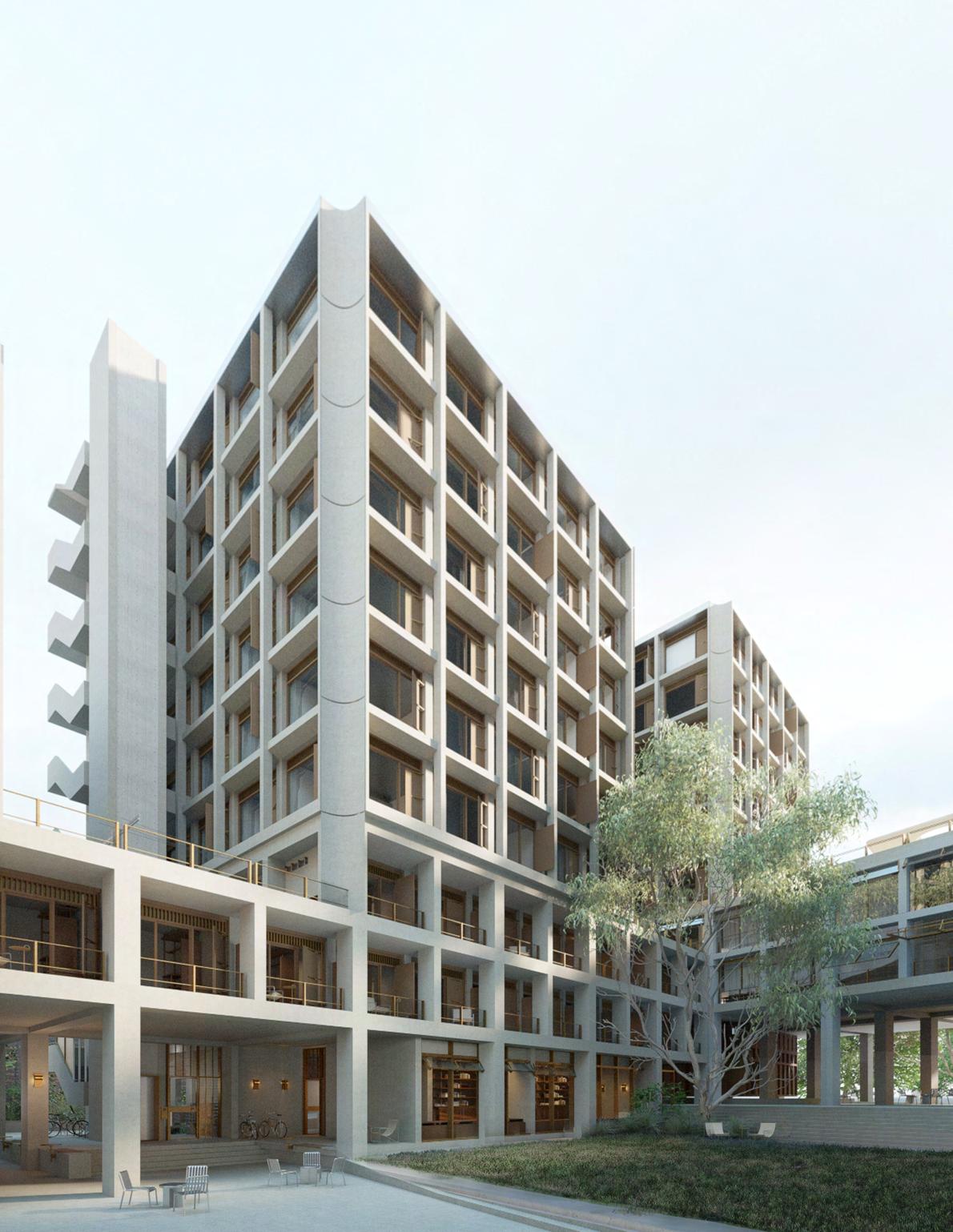
The rigid structural grid of the towers which facilitates the highly efficient arrangement of units reveals itself on the facade of the building. The brutal grid form is broken down by the addition of a brise soleil in front of the main load bearing column. This gives the facade depth and a layered quality while improving solar control, and rain protection for windows openings. Window Joinery is made from natural finished timber and balustrades and other hardware uses a brass coated finish to inject warmth and softens the appearance of the facade.
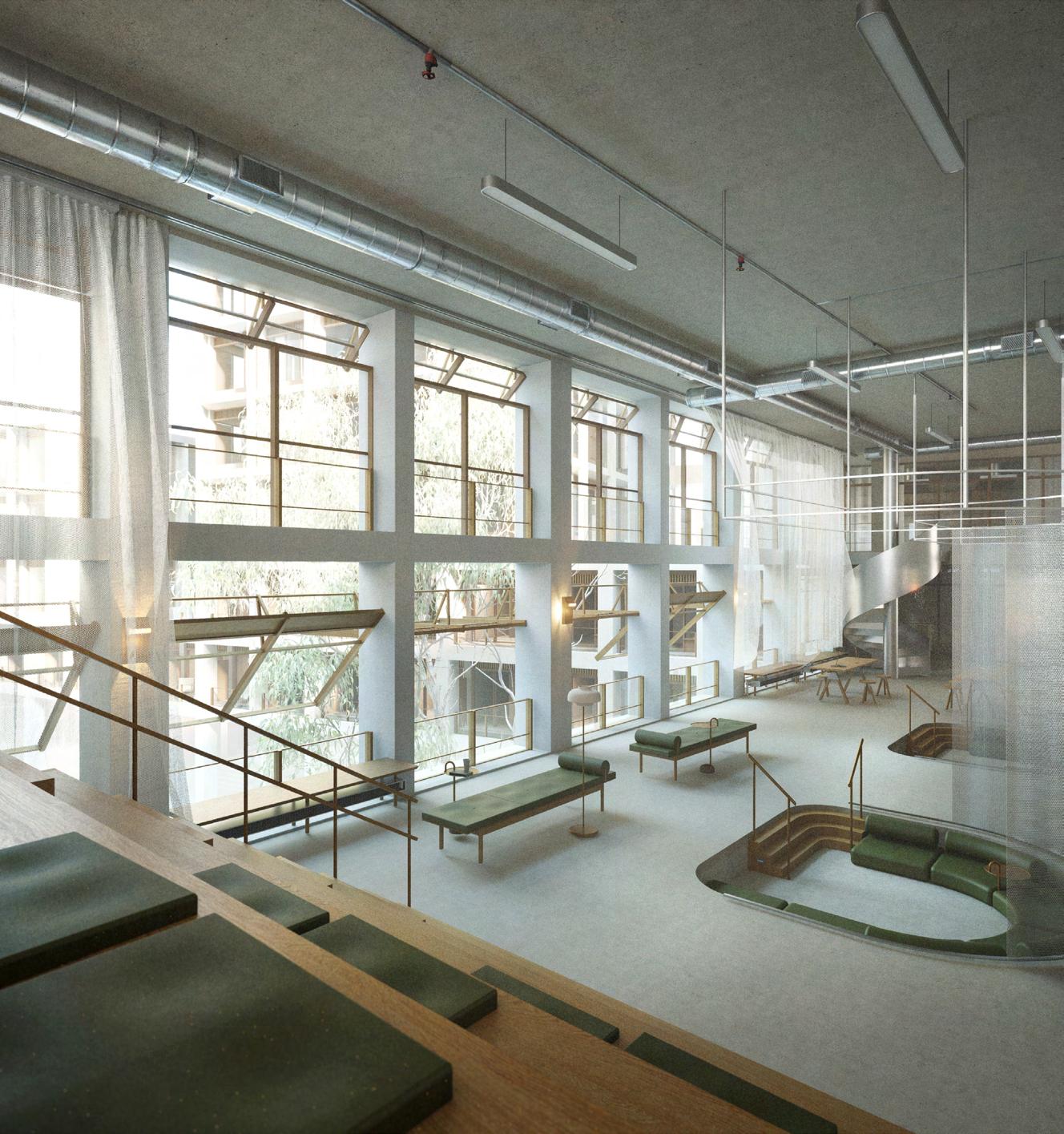
1:200 MODEL IMAGE I
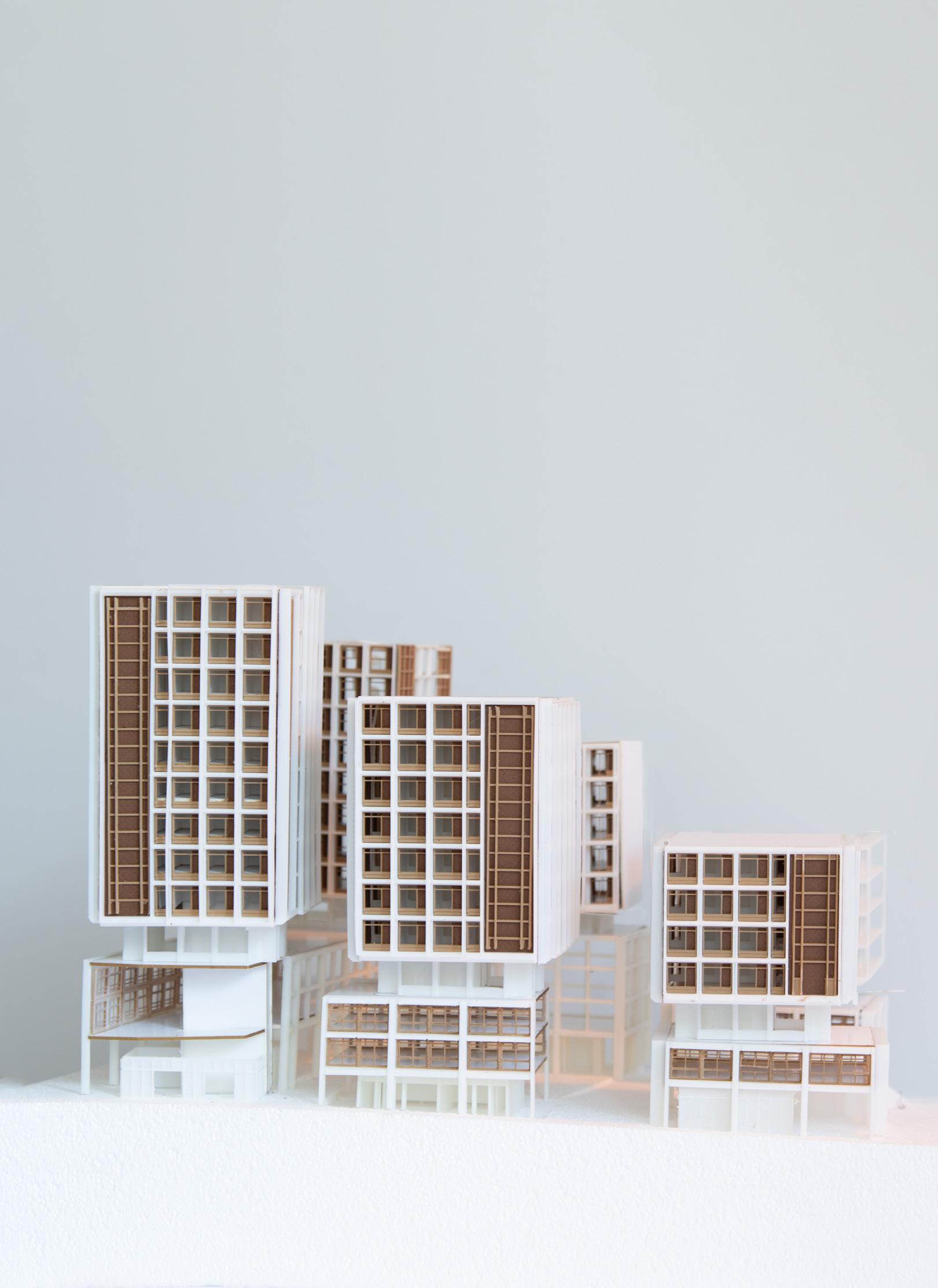
Looking at the site through an urban planning lens, the site becomes the interface between the hustle and bustle of Parramatta Road and The University of Sydney beyond, and the quiet leafy suburb of Forest Lodge. The existing buildings between Parramatta Road and Arundel Street form an impervious barrier between the Camperdown and Forest Lodge. This site offers the opportunity to allow a through site link that breaks open the rigid delineation between suburbs.
1:200 MODEL IMAGE II
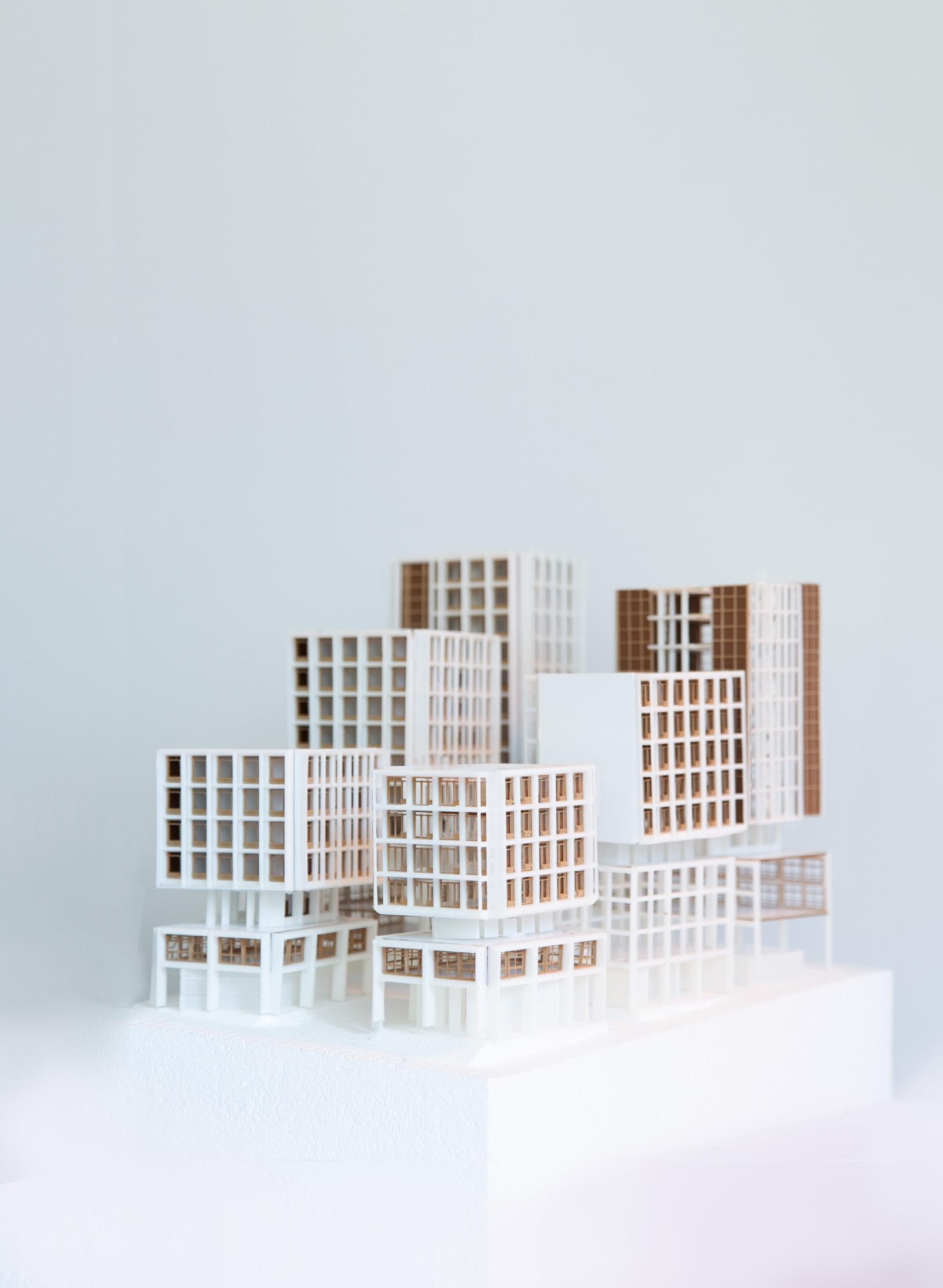
In response to contrasting urban conditions of Parramatta Road and Arundel Street the building loads its mass and height towards the busy Southern Side and steps down in height dramatically towards the Northern edge. This stepping of the towers also allows the maximum amount of sunlight into the courtyard.
The change in elevation is mediated partially through the stepping of the terraces but also changes are absorbed by varying ceiling heights on the ground plane. This allows the rest of the building to be aligned with a 3100 floor to floor.
GROUND FLOOR PLAN
The ground plane is split up into three levels to negotiate the changes in elevation. Each one taking on their own unique use and character.
Two blocks sit on the edge of each level creating a series of courtyards. The Southern most blocks house the most public programs, a theatrette, Food Stalls,and a Convenience store, amenity to both residents and the public.
The middle terrace is the most private, with student only amenities, a study space and small library, and a shared kitchen and dining area. This dining area opens out to a pavilion. Equipped with barbecues and seating, it works as an extension of the kitchen as well as a protected outdoor social space.
The lowest terrace opens directly to Arundel Street, functioning as a small public park, providing amenity back to the community and contributing to the network of public green space that is scattered throughout Forest Lodge.
TYPICAL PLAN
The key moves made in the plan are in response to the environmental conditions of the site. Two linear masses are situated on the Eastern and Western Edge of the site. With desirable sun and wind coming from the North East the mass on the Eastern side breaks up into three individual towers, allowing light and breeze to punch through into the courtyard and the western block.
The Eastern Towers house the Cluster type unit, smaller rooms with larger shared amenities in a 3x3m structural grid. The increased facade area allows more units to be arranged on the North and East Sides to take advantage of both the aspect and views out to the city.
The Western Block houses the more generous en-suite balcony units and are arranged in a continuous block within a 3x4m column grid. This provides great efficiency as well as protects the site from harsh Western sun and cold winter winds.
PLAN DIAGRAMS I
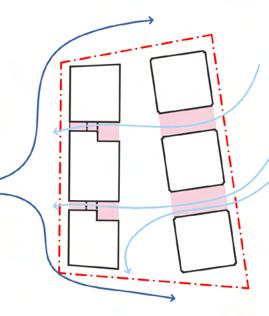
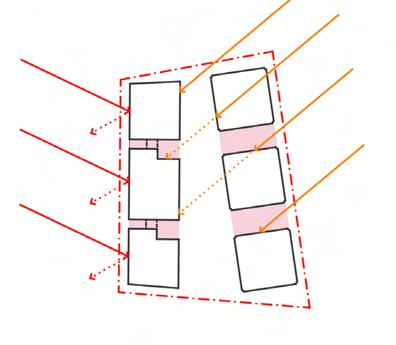
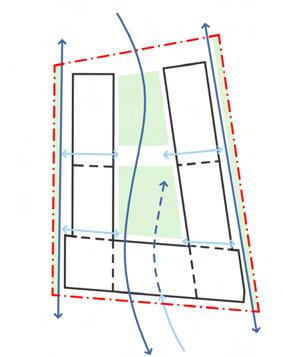
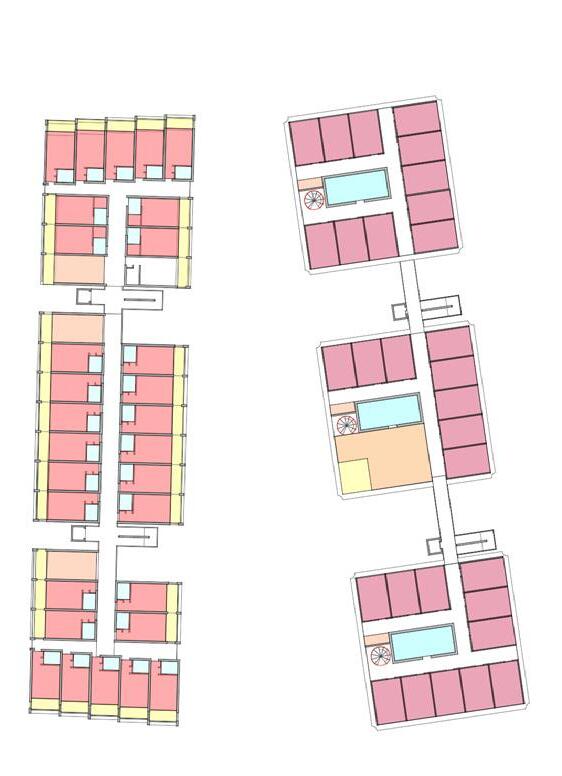
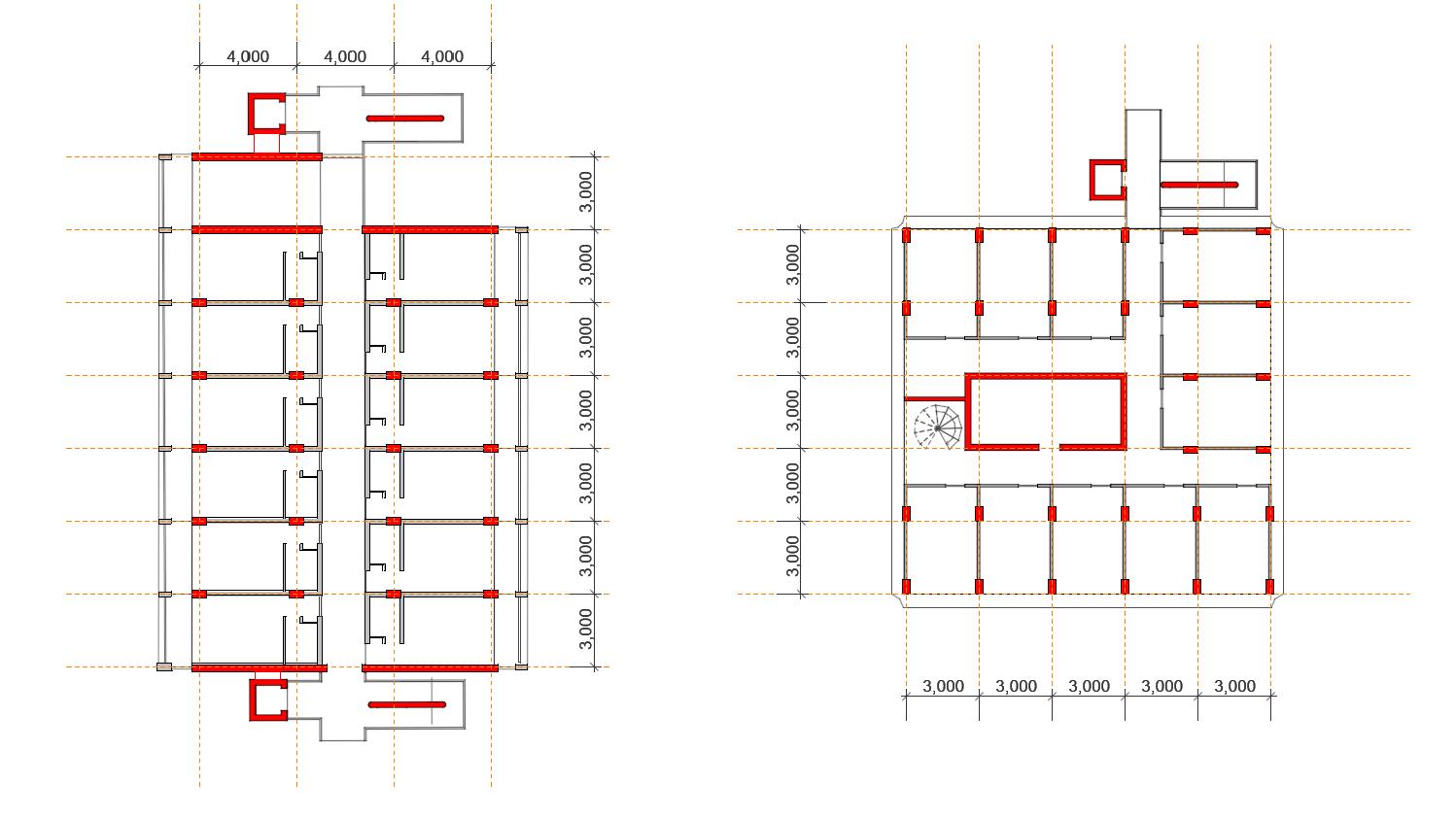
The Western Block houses the more generous en-suite balcony units and are arranged in a continuous block within a 3x4m column grid. This provides great efficiency as well as protects the site from harsh Western sun and cold winter winds.
The Western Block utilizes a long double loaded corridor for efficiency but breaks up the length with shared spaces and voids that open up to the internal courtyard. The doors of units facing each other are staggered against each other to avoid entrances directly facing each other.
PLAN DIAGRAMS II
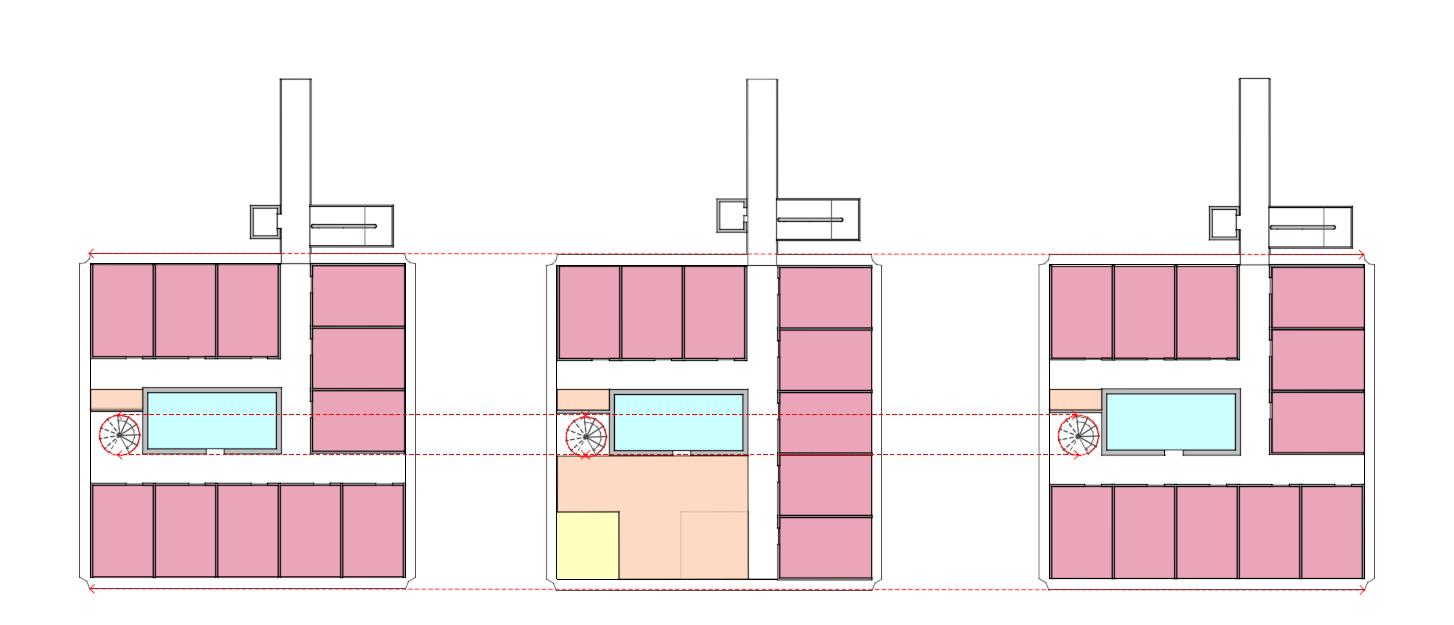
Cluster Unit Blocks Sharing Arrangements
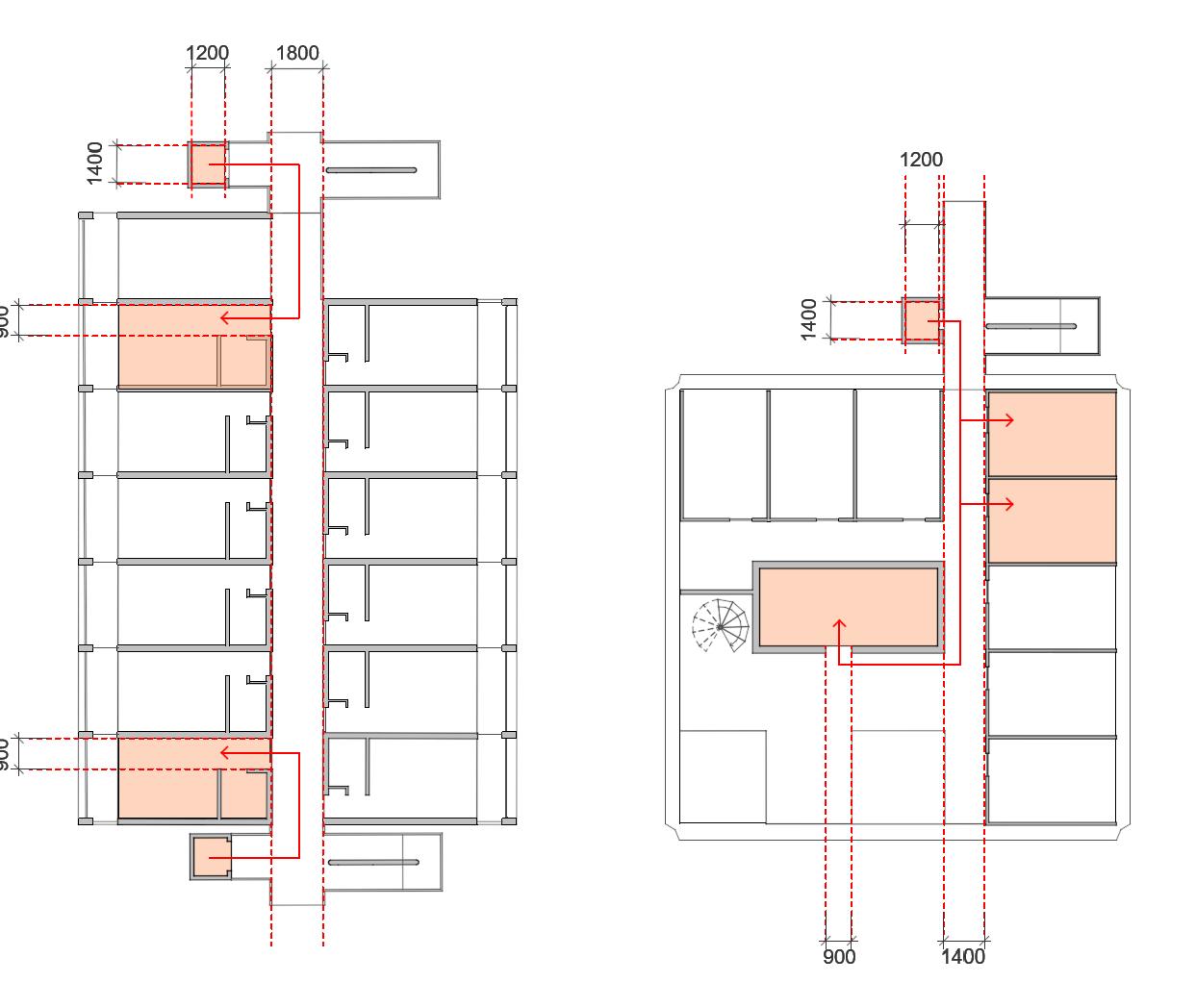
Accessibility
Each Level on the Western Block have 2 Accessible Rooms with Larger Doors and Rearranged Bathroom Space for Compliance
Each Cluster has 2 Accessible Rooms on the Communal floor. Bathrooms have 1 accessible shower and toilet.
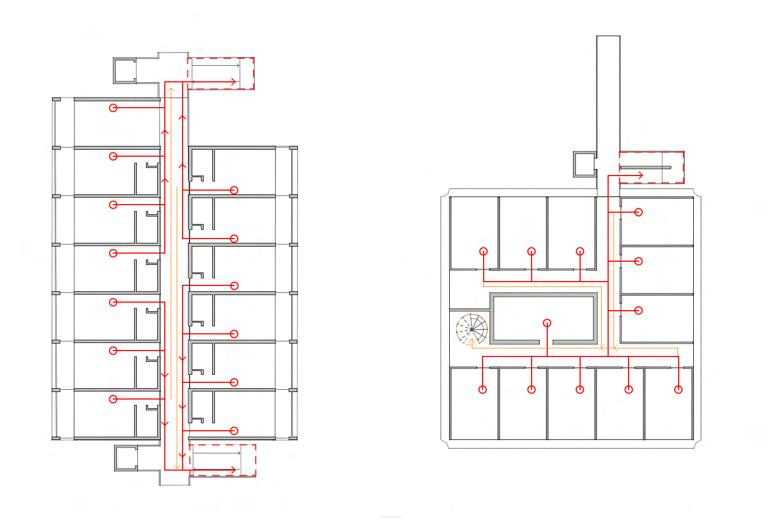
Fire Egress
The Eastern Towers employ a cluster typology which sees a stack of 3 floors acting as an independent subcommunity. Two floors with a high density unit arrangement sandwich a less dense “communal floor” which provides shared study, social spaces, connected by an internal stair.
SECTION
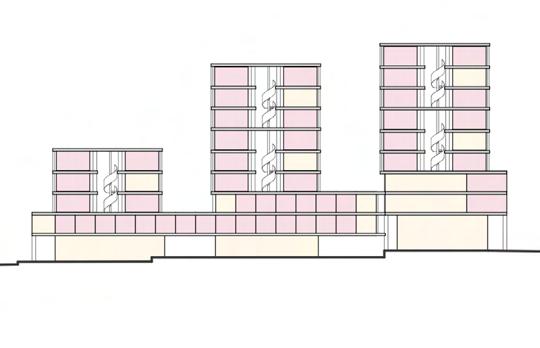
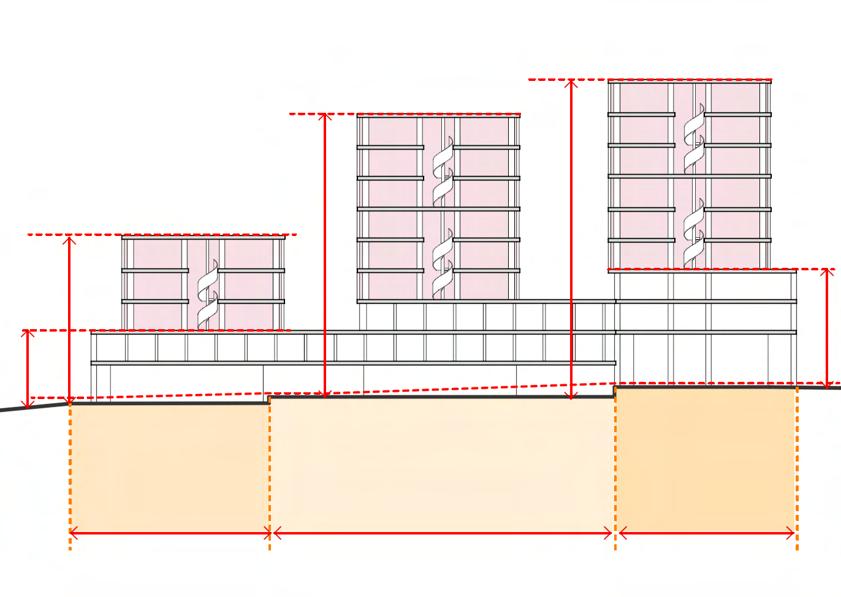
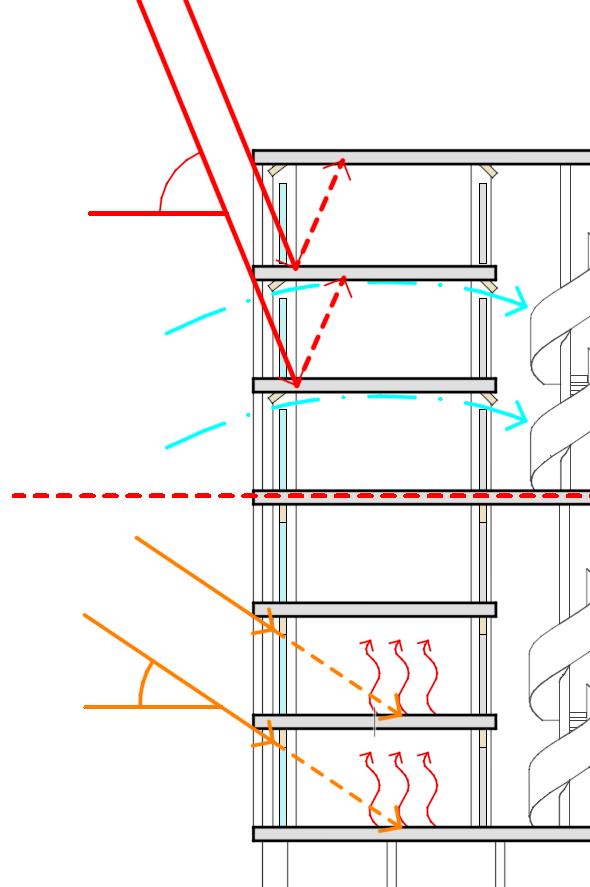
In response to contrasting urban conditions of Parramatta Road and Arundel Street the building loads its mass and height towards the busy Southern Side and steps down in height dramatically towards the Northern edge. This stepping of the towers also allows the maximum amount of sunlight into the courtyard.
The change in elevation is mediated partially through the stepping of the terraces but also changes are absorbed by varying ceiling heights on the ground plane. This allows the rest of the building to be aligned with a 3100 floor to floor.
ELEVATION
Whilst the Northern end of the site opens out directly to Arundel Street, The Parramatta Road side plays a more defensive role, needing to buffer and protect the site and suburbia beyond from the noise and activity of the Southern end. The podium and tall towers give the building a distinct street presence and form a volumetric delineation between the street and internal courtyards. The tower and podium steps inwards towards the ground to open up the two direct dda accessible through site links on the edges of the site.
The theatrette and Food stalls interface directly with the street and frames the entrance into the housing complex.
1/400
1:20 MODEL IMAGE
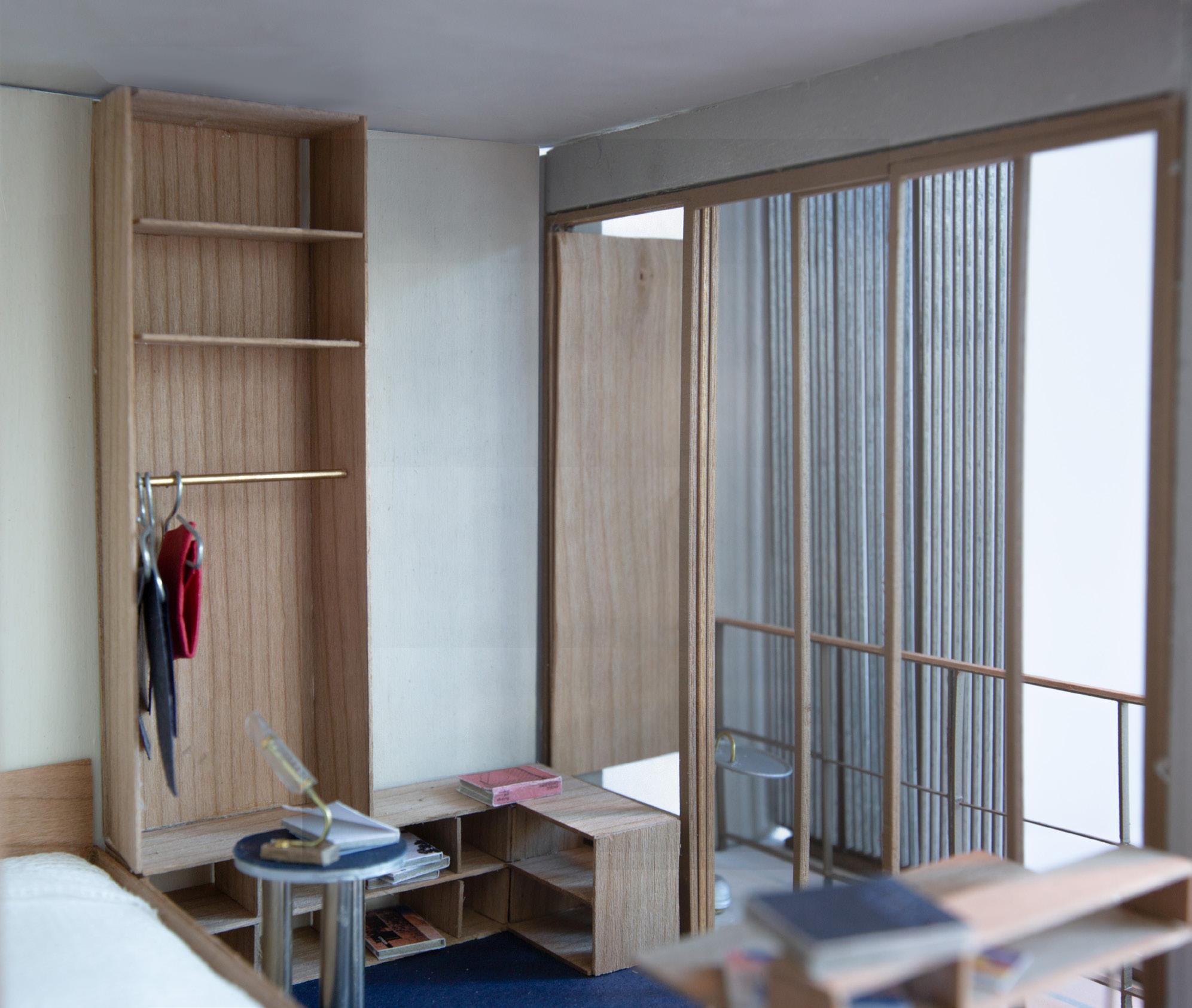
The panel when opened allows the user to sit on the L Shaped bench both on the inside and outside, or as a Lounge like seat when using the wardrobe and a cushion as a backrest.
This creates the opportunity for small social gatherings even such a small space where 3 - 4 people, sitting around a coffee table on the bed, the window bench, the desk seat and the balcony seat if the weather is favorable.
1:20 PRECEDENT STUDY MODEL
Student Residence and Reversible Car Park Bruther, Cité Universitaire Paris, France, 2018

7.
8.
9.
FAÇADE DETAIL
FAÇADE AXONOMETRIC
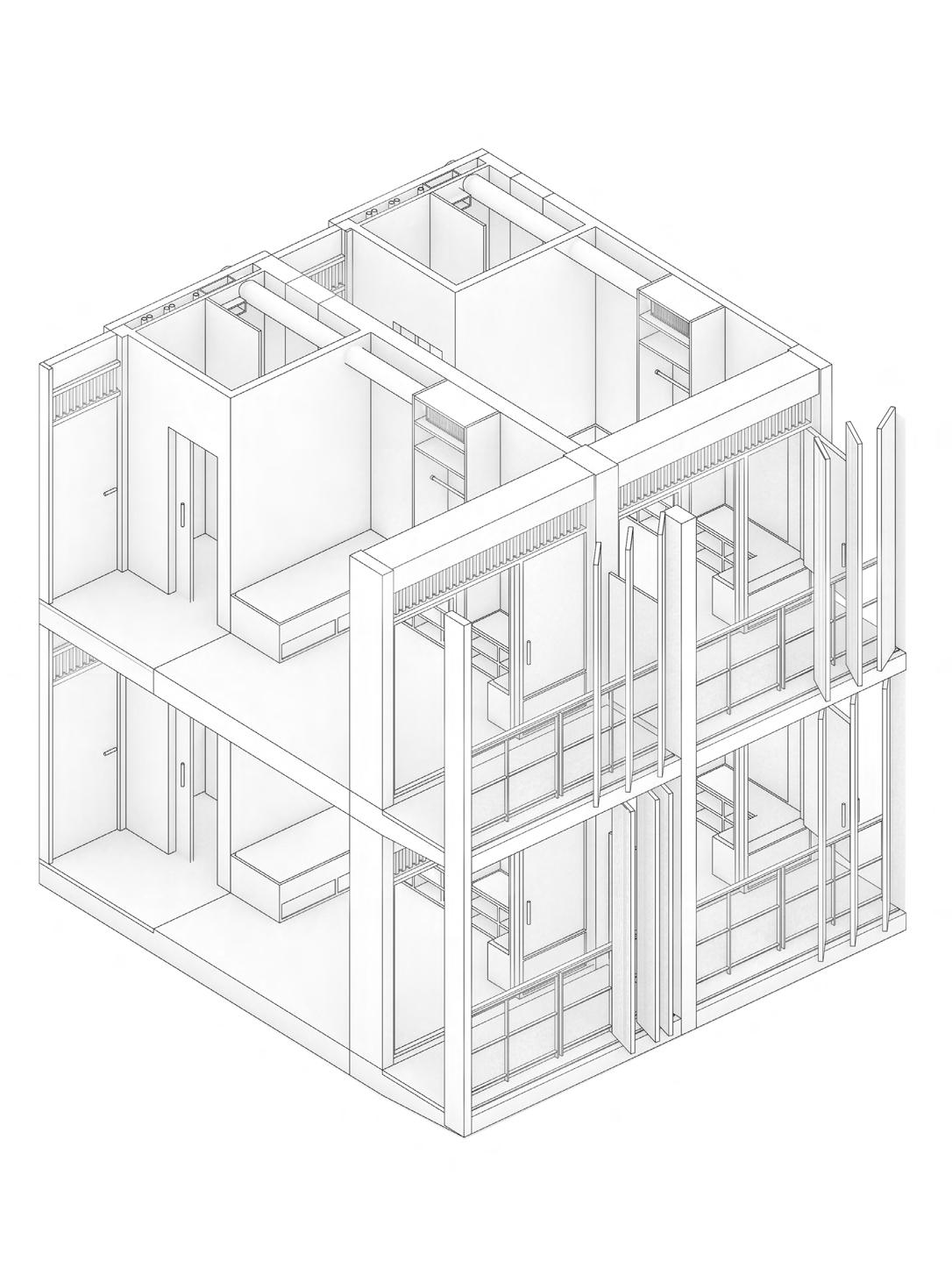

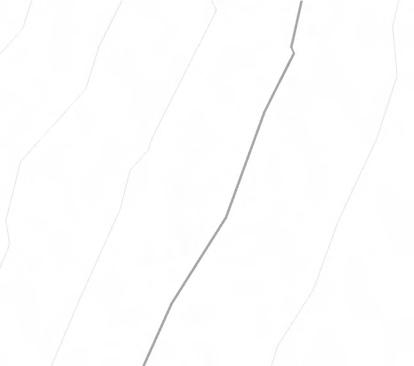


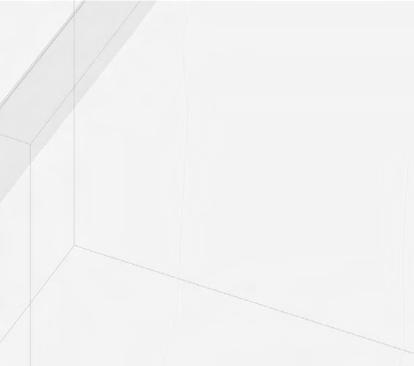
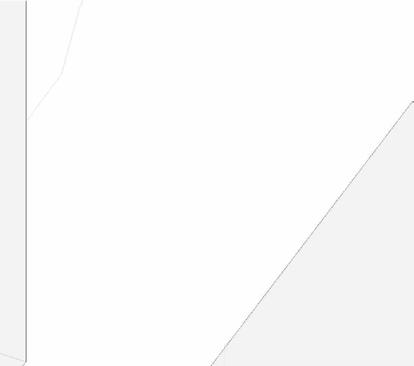

2, Y4, Master of of Architecture
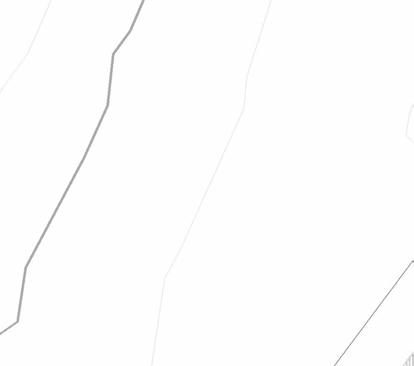
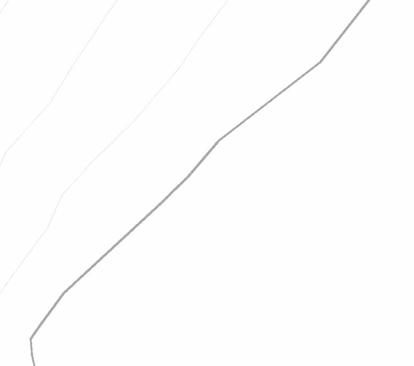
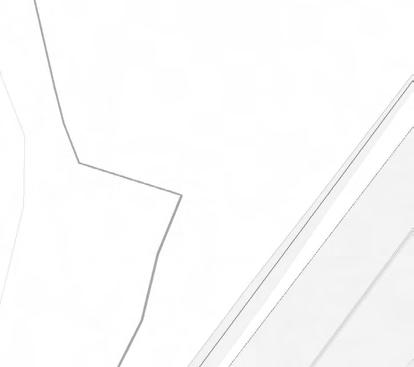
|| Semester
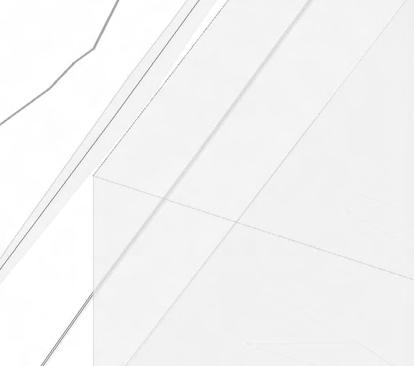
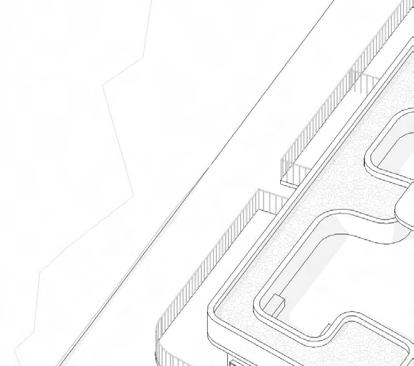
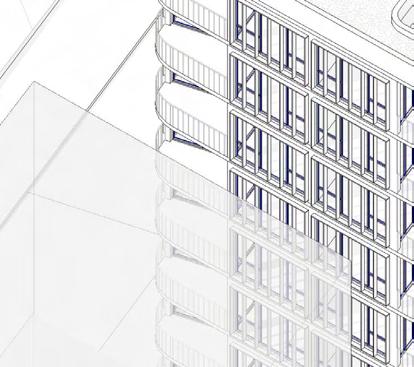
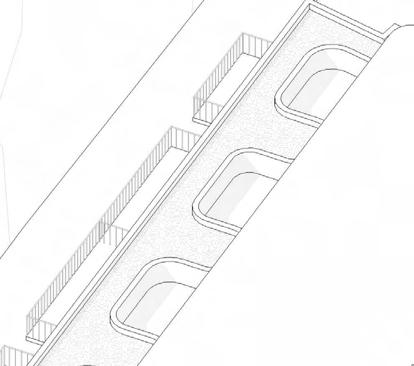
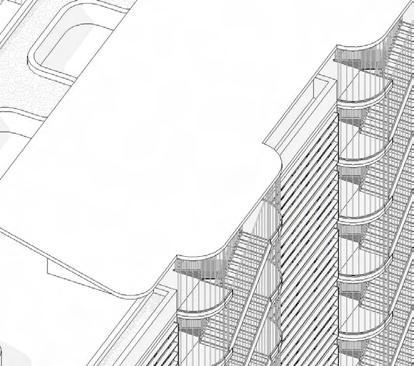
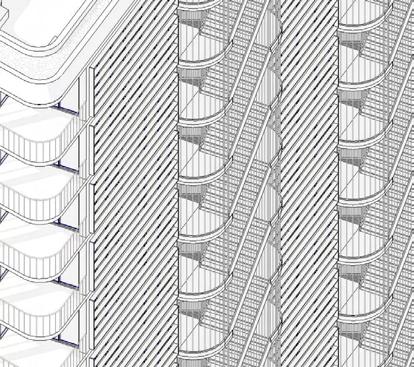
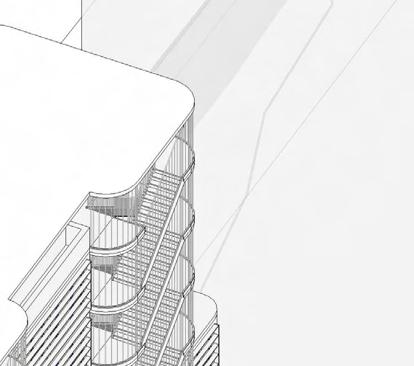
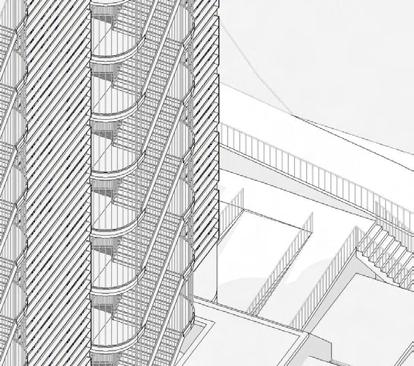
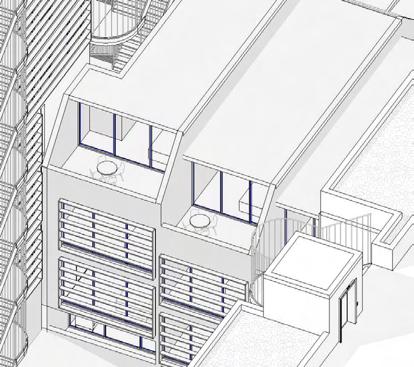

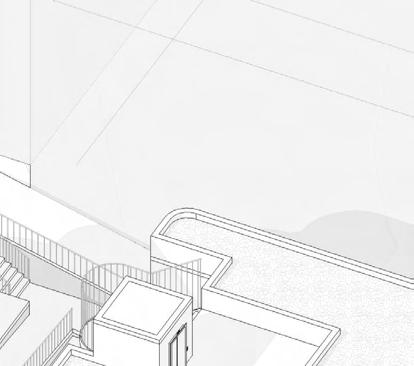
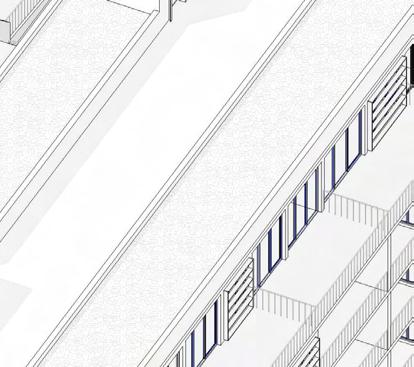
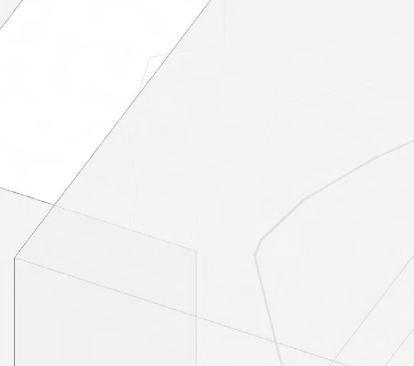

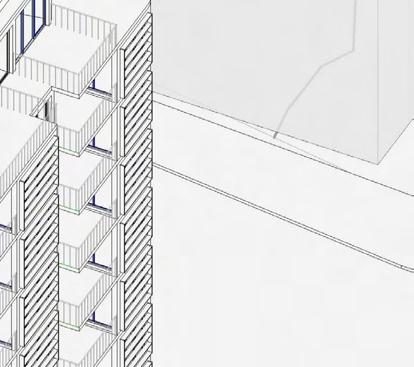
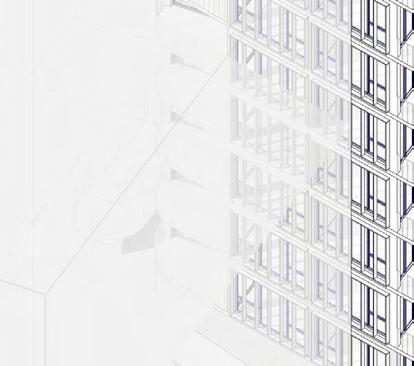
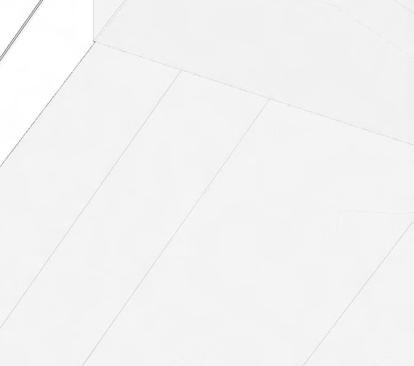
George Anicic, Sally Shin and Hugh Woods
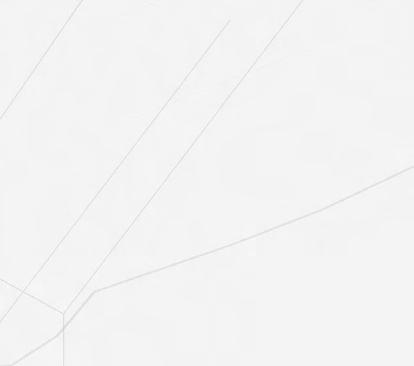
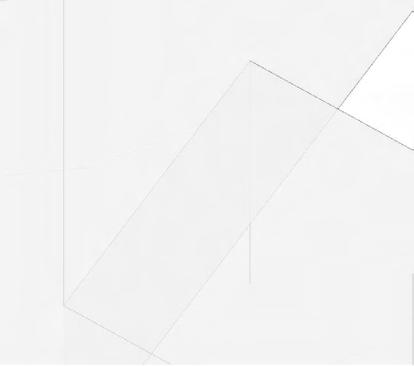
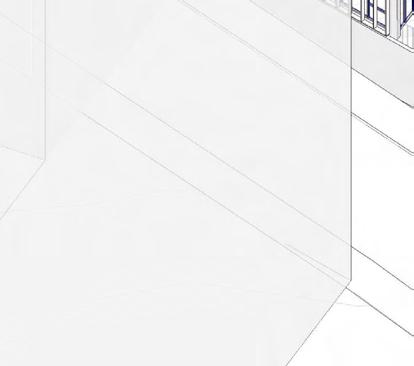
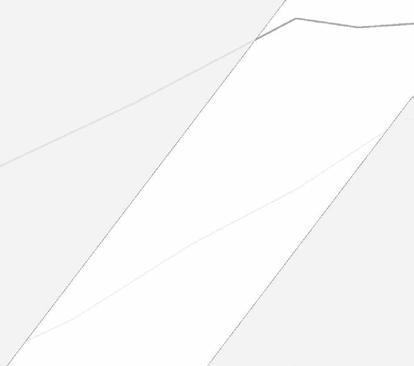

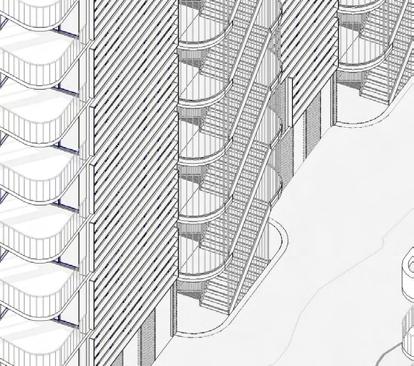
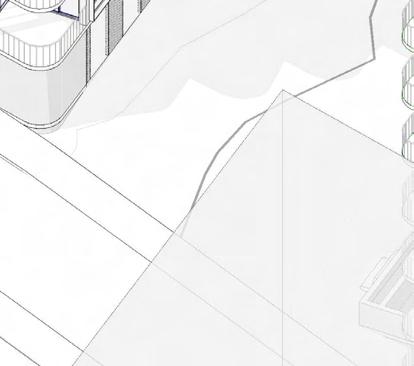
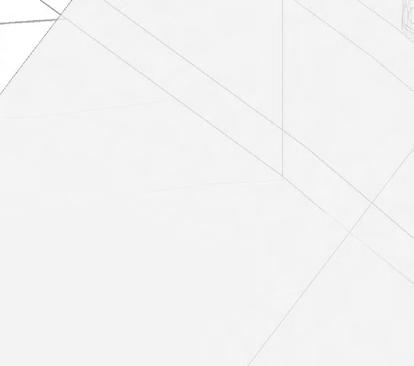

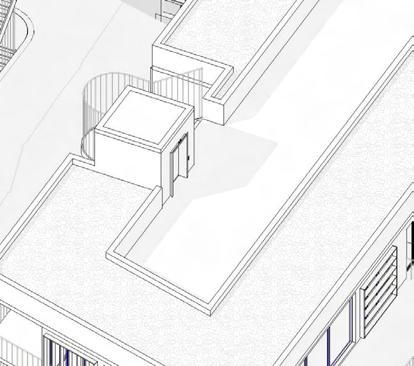
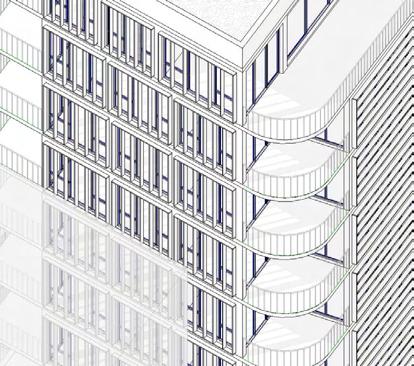
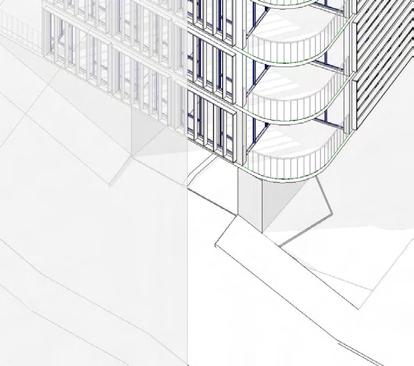
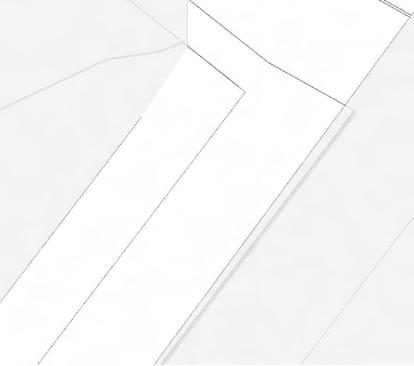
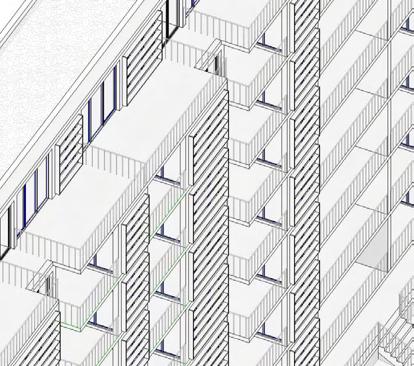
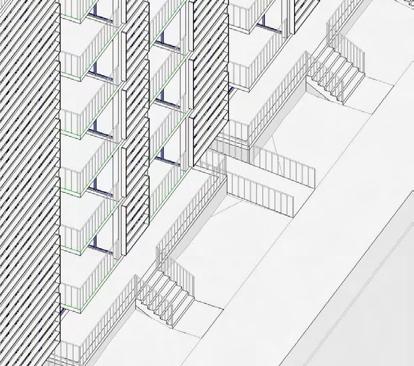
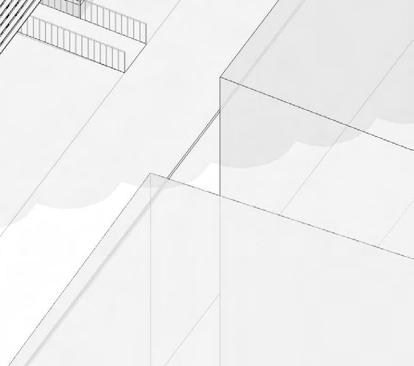

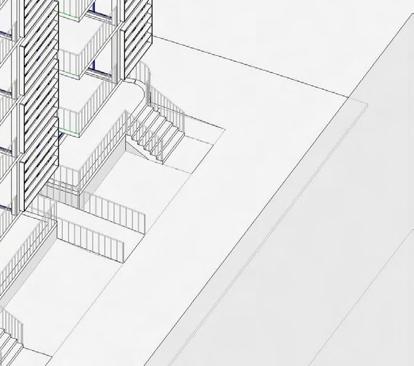
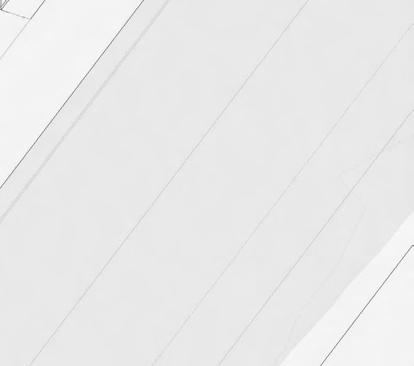

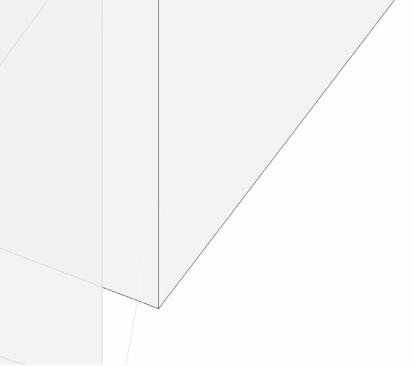
PROJECT STATEMENT
In an article titled “Fight for Waterloo redevelopment continues” written by Josh Clay published by Honi Soit in August 2022, it starts by stating:
It’s no secret that Waterloo’s public housing is in desperate need of improvement. The Soviet-esque concrete towers and medium-density complexes are insufficient to meet modern living standards, needing refurbishment and renovation to ensure they maintain their suitability... Unfortunately, many of the concerns regarding public housing resident have not been addressed. With the project entering the final stages of planning, how this redevelopment will impact Waterloo’s community is still worryingly unclear.
Though quite pessimistic, the aforementioned encapsulates the angst of the community as a seeming wave of gentrification threatens to dismantle communities in the area. Waterloo has a strong Indigenous history of struggle during the twentieth century and gentrification that has since impacted the First Nations people from the area. It is a lightning rod of controversy regarding urban theory due to this history of prevailing social marginalisation, cultural dispersion and displacement.
The project entailed designing a mixed social housing block for the Waterloo precinct. In which it is not merely the difficulty of developing a project apartment for an area, however, to consider a multitude of facets that make the project increasingly difficult. The heritage and history of the site with the existing community that are apprehensive to the project as well as with the increasing demand for affordable housing in the booming population of Sydney. Thus, the project had the primary rationale of retaining an equilibrium of two strong needs in supplementation with principles of the “Consideration with Country” framework.
From studying precedents of recent revitalization projects and the existing building on the site, it provided the framework to develop a critical lens for the design process by critiquing and embracing aspects of design. Not merely to remove and replace the existing building on the site, however, to consider the maximum benefit of the existing building on the site and how it may be continued into the future. As a team of Sally Shin, Hugh Woods and I - the project aims to address the concerns articulated in the article and contribute to a considered redevelopment that respects the site and its community’s history and future ambitions.
The entrance to the carpark is situated in the North-West corner of the site, accessible from Reeve Street. This discrete entrance has been strategically designed to seamlessly integrate with the site’s steep gradient, ensuring both functionality and aesthetic harmony. The considered placement of the entrance enhances accessibility as well as it contributes to the overall cohesiveness of the site’s design, effectively blending with the natural topography. In the Western Block, building upon the deliberate consideration of the site’s topography, the Ground Floor Apartments have been designed to correspond with the natural terrain. These apartments feature stairs that lead to a lower level, with the purpose as an additional living space.
The apartments on Level 1 in the Western Block offer direct accessibility to the topography on the East side, while the West side provides access to the site through the stairs mentioned earlier. The Half-Sunken space in the Eastern Block serves a communal purpose, functioning as a shared Gym and Sauna area for residents of both apartment blocks.
On Level 3, the Eastern Block are Ground Floor Apartments, featuring the primary Lobby space. The core spaces on this level serve as pivotal threshold points, facilitating Disabled access from the East side, specifically from Waterloo Park. This design enhances accessibility and establishes a entry point for residents and visitors. Moreover, it aligns with the “Consideration of Country” ethos, emphasising the concept of In-Between spaces and fostering a sense of community by encouraging incidental social interaction.
Levels 8 and 9 consist of double-story units, primarily featuring three-bedroom apartments designed for the market housing. This architectural configuration navigates the three metre setback restrictions, resulting in spacious living areas and bedrooms that benefit from ample solar access and natural ventilation.
Concrete is the main material in which it is softened in supplementation with warm elegant finishes. Timber is the main material of the interior finishes and louver systems, as it gives warmth, and softness to the living areas. Cast brass hardware which is complementary to the warm tones of the timber and over time will develop marks through a patina which reflects the frequent use of a space. The recycled use of the previous building for the footpath and brise soleil entrance connects the buildings with each other and harks back to the heritage of the area.

LEVEL 4 (1:400)

LEVEL 5 [TYPICAL] (1:400)
The apartments have a dual-aspect design, where the living spaces are oriented towards the outside of the site, offering residents captivating views and a connection to the surrounding environment. Meanwhile, the bedrooms are strategically positioned to primarily face the internal courtyard to ensure privacy in more intimate areas. Moreover, the design ensures that there are minimal areas in the unit without solar access or natural ventilation, enhancing the “Consideration of Country” concept of Connecting with Nature. This approach brings about a blurred dichotomy between the interior and exterior, living spaces are always connected with natural elements.
EXTERNAL PERSPECTIVE
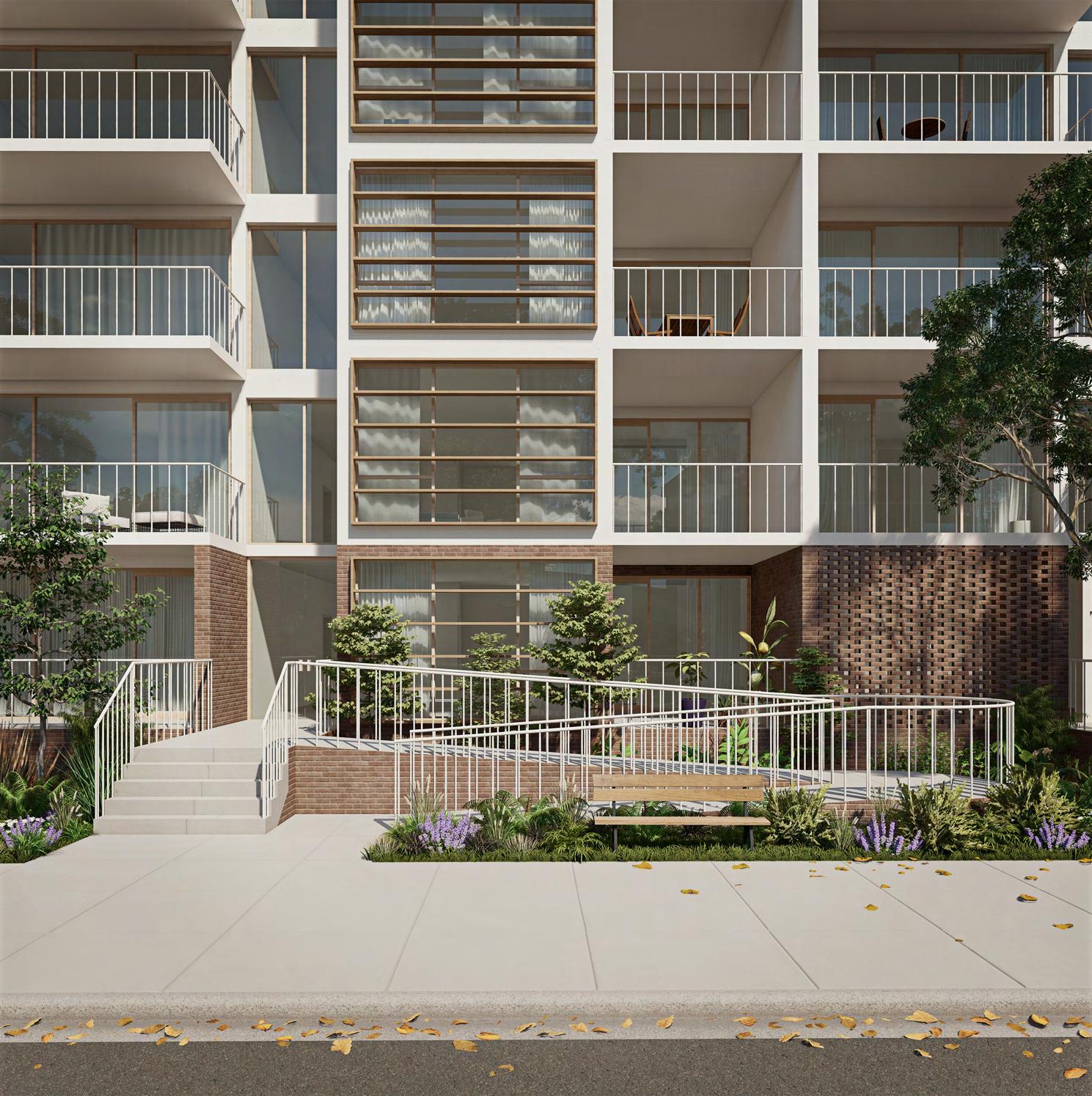
The project uses a recycled brick brise soleil for the lower levels to connect all buildings as well as to hark back to the heritage of the previous building on the site. The pattern provides a sense of lightness and transparency to blend with the materiality and scheme of the floors above.
INTERNAL PERSPECTIVE
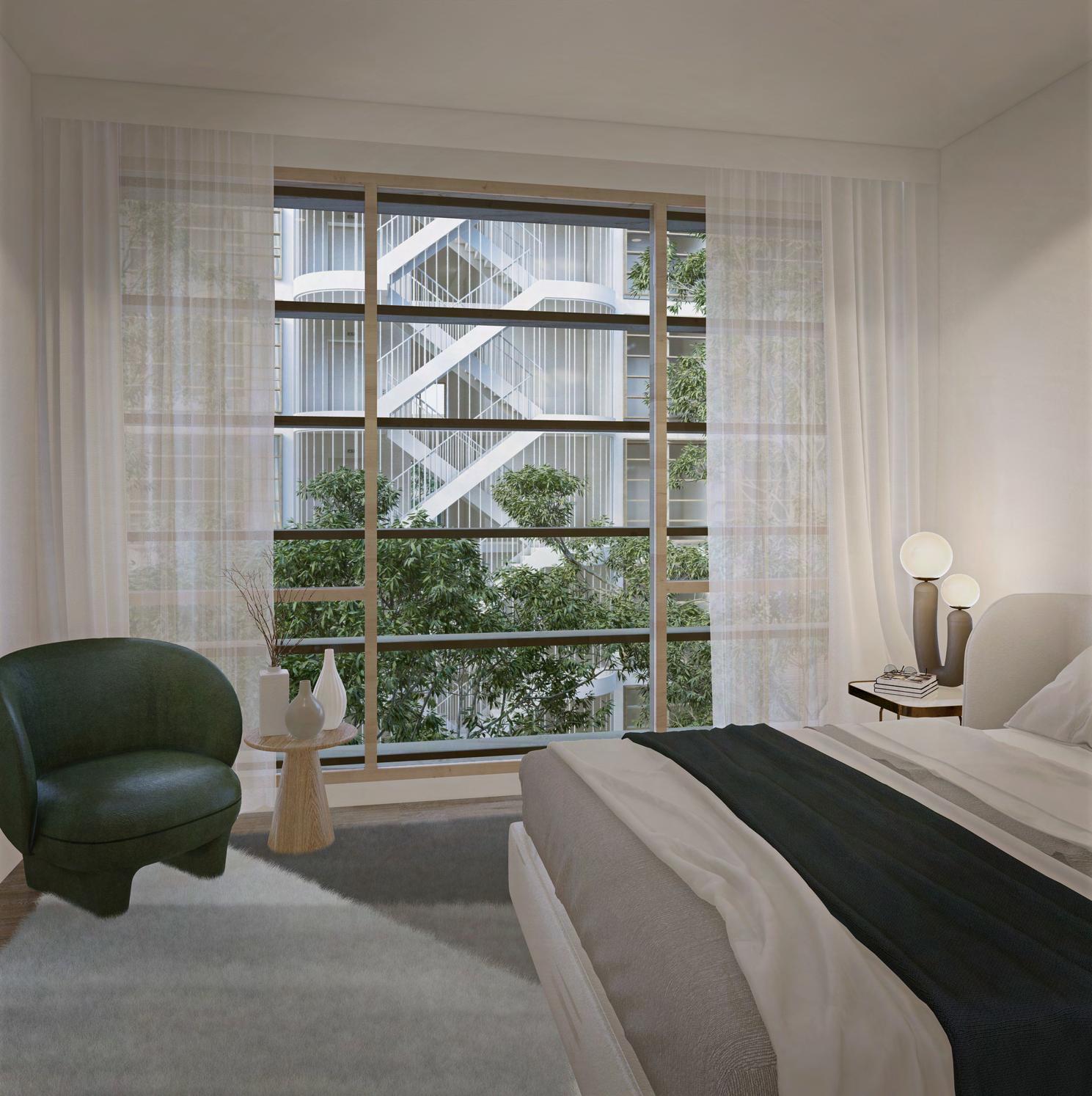
The timber elements, spanning from internal finishes to timber louvers and the encompassing trees, creates a seamless blend, blurring the boundary between the interior and exterior. The apartment appears to float, surrounded by trees that act as a natural curtain, offering privacy. Simultaneously, the internal courtyard functions as the project’s veritable lung, contributing to a sense of organic interconnectedness. This synthesis of timber elements and natural surroundings not only blurs the lines between indoor and outdoor spaces but also imbues the apartment with a harmonious ambiance, where nature becomes an integral part of the living experience.
SECTION THROUGH COURTYARD (1:400)
“To touch the ground lightly” is not only an ideal of Modern Australian Design but as well a crucial concept in designing with first knowledge. The scheme decides to sit itself above the ground leaving an open ground level which not only allows a generous urban condition but allows the ground to be as undisturbed as possible and enables earths to breathe and connect to the sky.
SECTION THROUGH TERRACES (1:400)
TENURE UNIT MIX
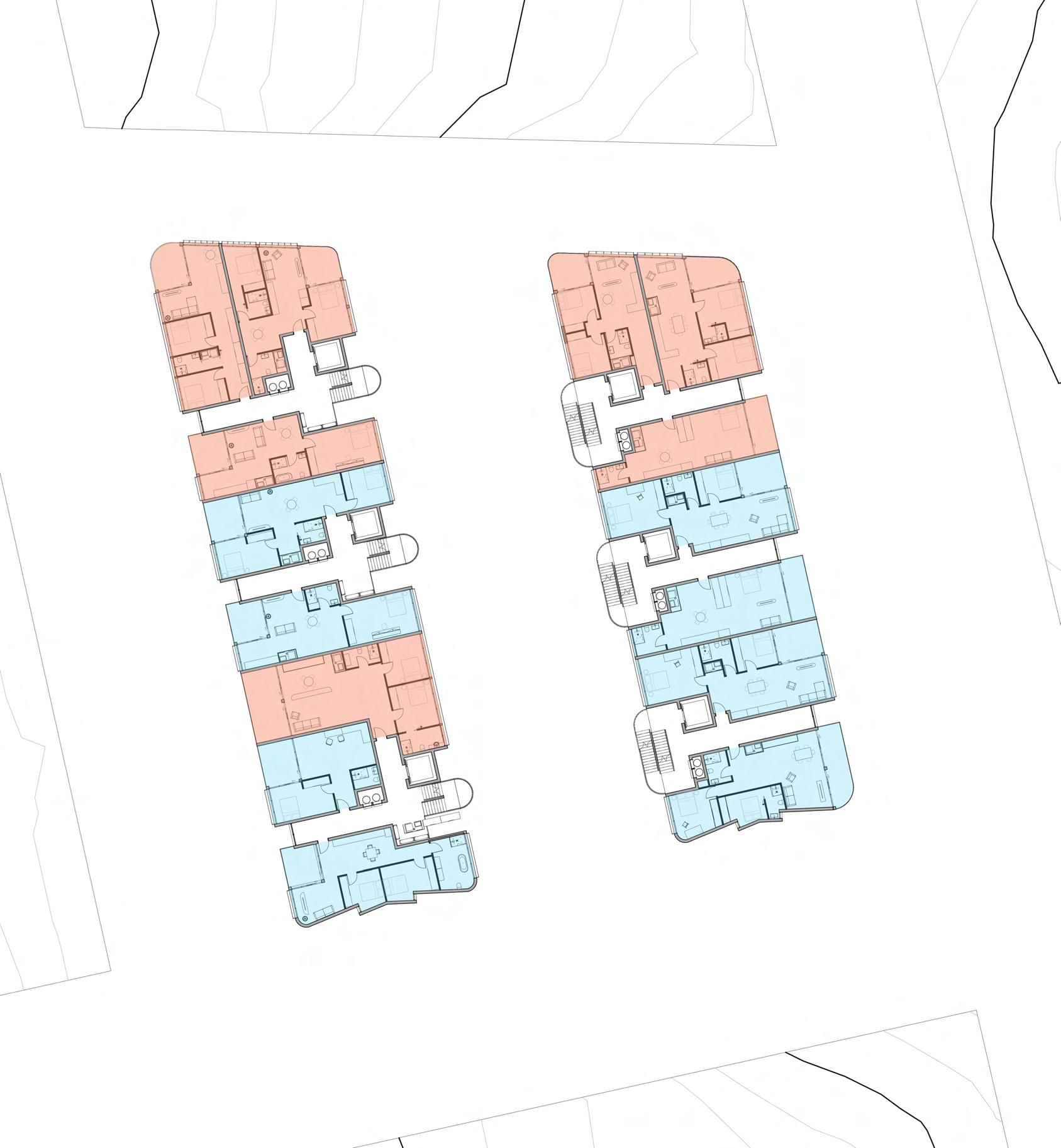
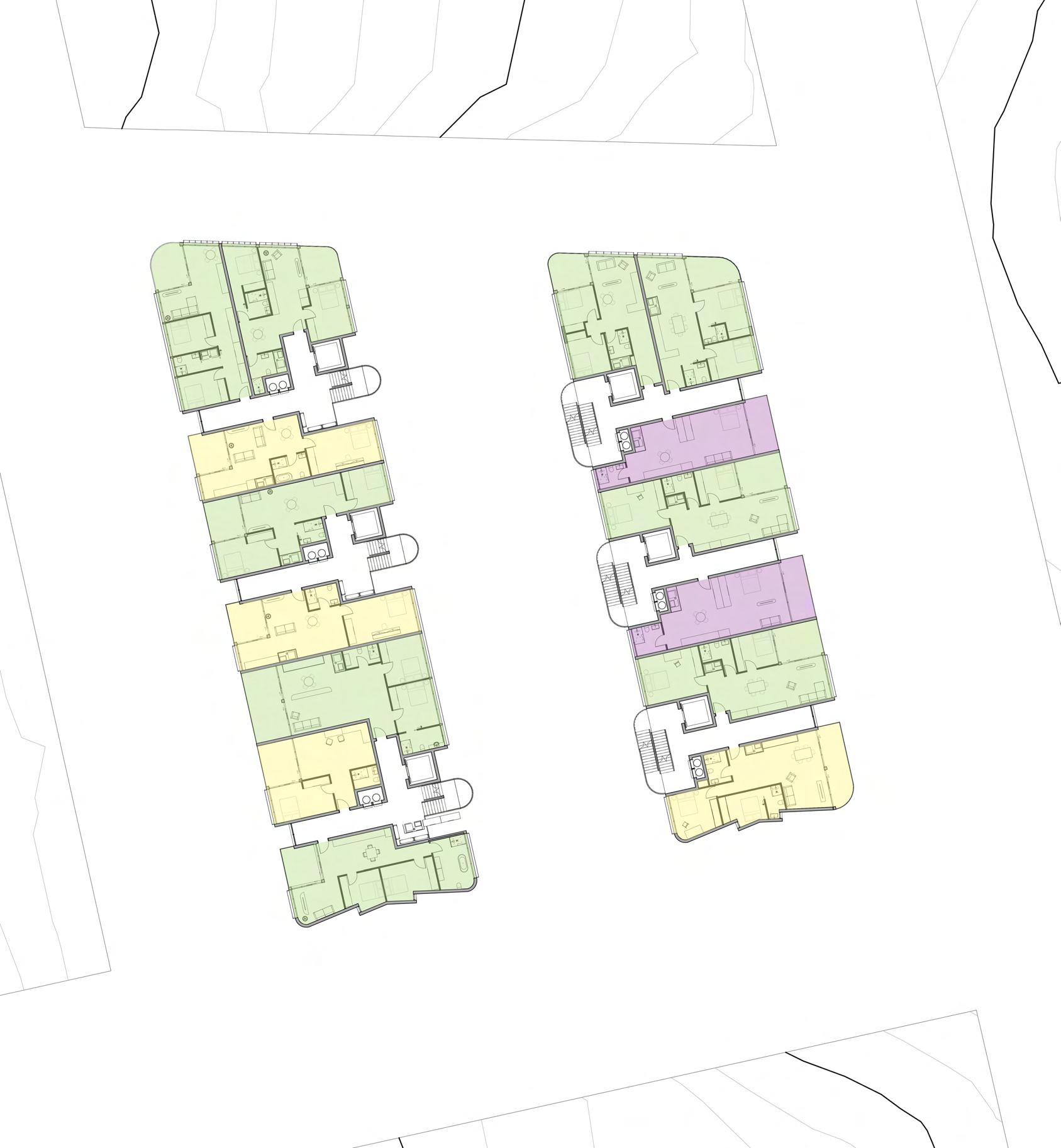
ACCESSIBILITY/FIRE EGRESS

The circulation systems comprise a total of 6 cores, with each core accommodating 2 to 3 apartments. Like the apartments, these cores are designed with a dual aspect, ensuring ample solar access and natural ventilation. The switchback configuration taken inspiration from JPW in the Central Park complex not only accentuates the curves of the building floor plate but as well blurs the boundaries between the interior and exterior – enhancing the sense of connecting with nature as one leaves their apartment.
DEEP SOIL / PLANTING ARRANGEMENT
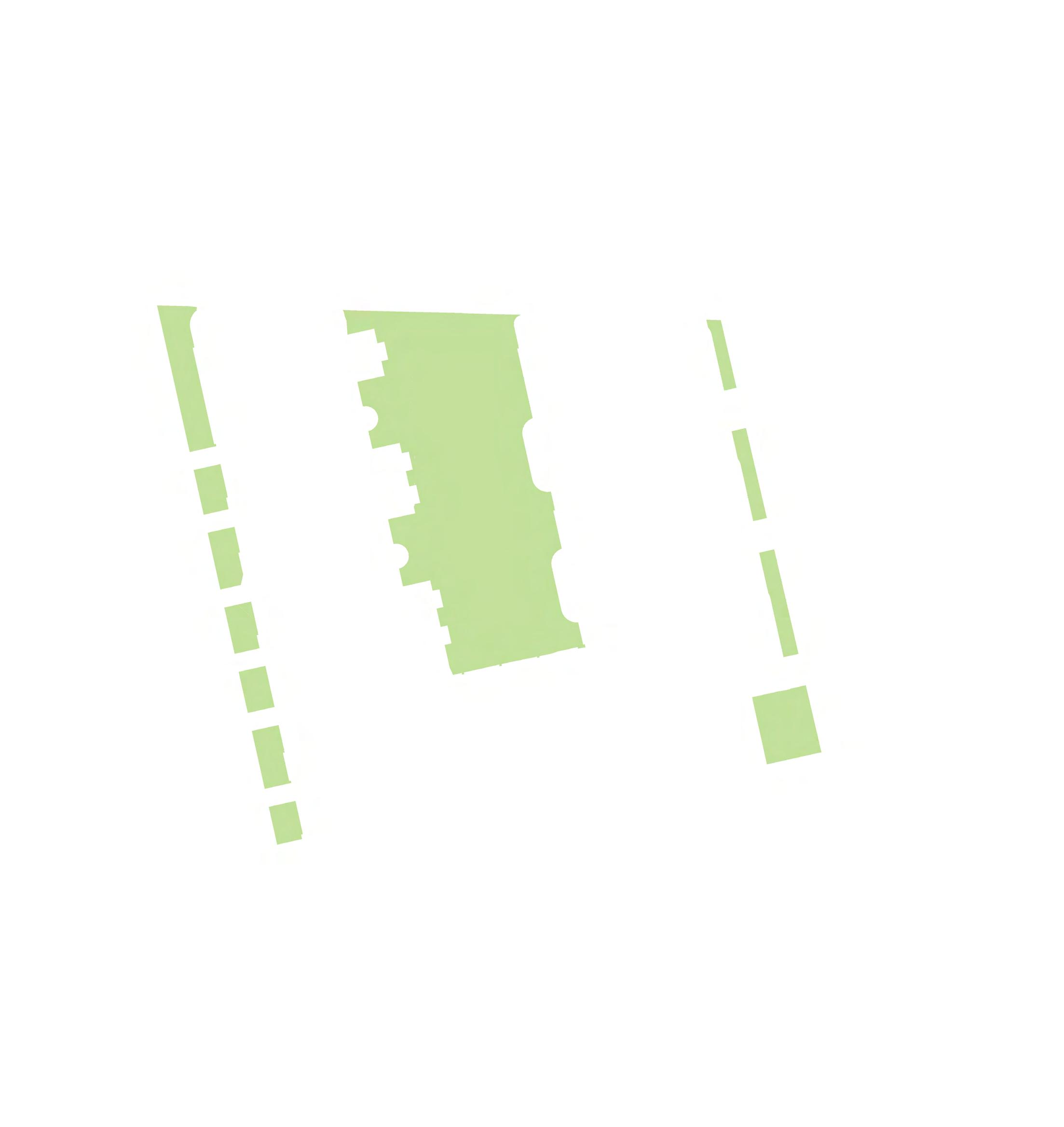
Site Area - 3340m2
GFA - 20541m2
FSR - 6.15:1
Dwellings per ha - 455 FOR BUILDING
Inspired by Renzo Piano’s Rue de Meaux precedent, the internal courtyard in this design concept is envisioned to emulate a wild, park-like ambiance. As residents leave or enter their apartment the courtyard acts as a respite from the noise and artificial nature of the city. Following a strategy similar to terraforming, the aim is to restore the courtyard to its original topography. This process includes the deliberate planting of native trees (most notably Eucalyptus and Wattle trees) and indigenous flora (Bottlebrush flowers and Hakea shrubs), reinstating the area’s natural ecosystem such as attracting birds to the native plantings. As part of this commitment to preservation, the untouched courtyard will strive to retain as many existing trees as possible. As well as having Waterloo Park in close proximity which alleviates the need to provide direct outdoor facilities - it may be used more as the veritable lung of the project.
SPECULATIVE SPOLIA THESIS STUDIO
George Anicic || Semester 2, Y5, Master of of Architecture
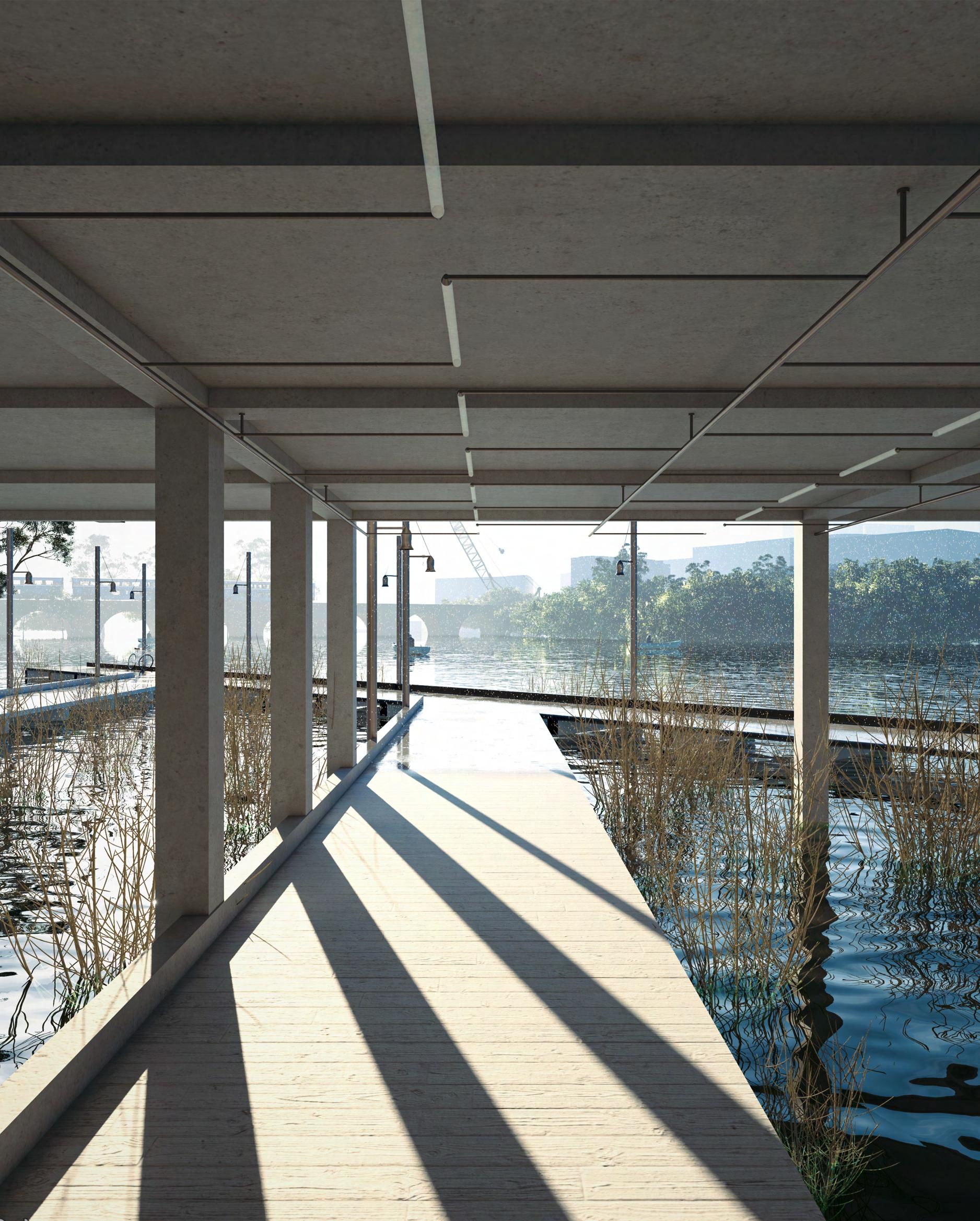
PROJECT STATEMENT
If a building were erected today, what would it look like in the distant future? How has its function changed over time by its context? What has happened in this period? What elements of it were originally there that were stripped away? As we envision the buildings of today becoming the relics of tomorrow, the ever present ancient art of Spolia offers a lens into a speculative future where past fragments are woven into future narratives, breathing life into the architecture of tomorrow.
As seen in contemporaneity, many mid to late-20th-century buildings are reaching the end of their usable lifespans. Architectural practices acknowledge that they can no longer demolish and build in the manner in which they did in the past, rather through a process of upcycling, breathing life into relics to extend the life and potential of the building that already exists. An elaboration upon the practice of upcycling is to design buildings that recognise their mortality from their conception. An architecture that identifies how it will dilapidate and how it may be a form of upcycling or spolia throughout time.
Not merely would it be the conversion of the envisaged building for its potential future, but, anticipating the landscape of its context in contemporaneity as well. Ruins are celebrated as the natural dilapidation of the building over time and are seen to have a sculptural aesthetic to the structure; deterioration stripping the architecture to its fundamental essence. The building is not merely made to serve the present moment. Which leads to the question of how can a building be designed to evolve in accordance with the ever changing demands of it? Ultimately, “future-proofing” a building by envisaging it as a ruin stripped to its zero degree to which through a process of spolia or adaptive reuse has life reincarnated.
The primary rationale of the project is to create a speculative narrative of how the building built for the present may evolve through adaptive reuse methods into the future. Providing a narrative of the change and evolution of the building throughout time. Through the specific lens of the Sydney-based site of Wentworth Park/Blackwattle Bay that is planned to be revitalised and adapted with a polyvalent structure for the future. In conjunction with rational analysis to explore ideas of the future conditions of society and the city.
Ultimately, the architectural program intends to provide a speculation on future needs by projected societal changes and environmental challenges. Through the speculative approach of a specific site it will invite a deeper understanding of the history and trajectory of Sydney at large. Indeed, architecture is not merely a static form, on the contrary, a dynamic entity in continuous flux.
The site of Blackwattle Bay (the specific location of the Wentworth Park Greyhound Racing) is undergoing a significant transformation into a gleaming cultural and entertainment waterfront destination. A “continuity of place”1 as initially it was a place of sustenance and cultural significance for the Cadigal people who fished in the bay2 to which it became a primary source of sandstone that characterises many of Sydney’s early buildings.
Further to this, was a major industrial area that experiences decline and later renewal from the late 20th century. Blackwattle Bay’s transformation will focus on enhancing the public domain and open space, to provide better connection to the CBD that is in walkable distance into a “genuine mixed-use precinct of historic buildings and places, social housing, creative industries and destinations attracting international visitors”.3
Pre Colonisation. Before European Colonisation it was a place of sustenance and cultural significance for the Cadigal people who fished in the bay.
(Aboriginal Cultural Heritage Assessment Report, 2021)
1788. The First Fleet arrives in the Sydney Cove leading to early European settlement in Pyrmont. Blackwattle Bay remained largely undeveloped as a tidal watercourse that flowed from swampy lands (ACHR,2021).
1789. With the European settlement at Sydney Cove, Aboriginal people were alienated from their land and resources; with violent attacks and major smallpox outbreak. Historical records estimate that in merely one year the Aboriginal population of Sydney had halved. (Aboriginal Cultural Heritage Assessment Report, 2021)
1795-99. Thomas Jones was granted 22 hectares of land on the peninsula to which it was sold to Obadiah Ikin in 1796 for 10 pounds. Captain John Macarthur eventually bought the area 1799 for a gallon of rum. The Sandstone of the area became a primary source of sandstone that characterises many of Sydney’s early buildings. (Heritage Interpretation Strategy/Plan,2021)
1800s. Land grants were given for the early development of industry and agriculture. (Pyrmont Heritage Society)
TIMELINE DEVELOPMENT
1840s. Blackwattle Bay and the surrounding Pyrmont area became the workhorse of the city. From here the wool clip was shipped, sugar refined, flour milled, bottled milk dispatched, and electricity generated to light Sydney streets and run trams to Bondi. These were suburbs of sweat and toil (Pyrmont Heritage Society).
1830s. Blackwattle Bay and the overall Pyrmont area experiences major development with the construction of roads and buildings. Pyrmont with a major sugar refinery was a working-class industrial and port community. The noxious industries used the Wentworth Park area as an industrial dumping ground assumed to be washed out into the bay with the tides. Which did not occur effectively, providing a horrendous stench that pervaded the entire area. (City of Sydney, 2016).
1876. Blackwattle Creek and the head of the swamp were to be filled in which this commenced in 1876 until 1880. This included the construction of numerous sea walls and dykes to be constructed as part of the program. Following being filled, trustees were appointed to manage the new park and a competition was announced to design the new facility. (City of Sydney, 2016)
1860. In 1858, the First Pyrmont Bridge opened up. The pollution from the industrial works polluted the swamp. The site was reclaimed in an attempt to stifle the spread of disease due to the high levels of pollution. These establishments were removed and the local council lobbied to have the area filled in because of the horrific smell that continued to pervade.
(City of Sydney, 2016)
1882. By 1882 ovals, greens, paths, lakes and other facilities were completed, and the park was named after NSW statesman William Charles Wentworth (1790–1872). (City of Sydney, 2016)
1900s. As a port community it was infamous for its slums. Housing a population of almost 30,000 in the early 1900s. (City of Sydney, 2016)
1932. The Greyhound Racing ampitheatre opened as Greyhound racing was one of the most popular leisure activities for the Working Class. (City of Sydney, 2016)
1949. Fish Market Opened up. (City of Sydney, 2016)
1950s. The post-World War II period was that of dilapidation as industries fell into significant decline. The residential population decreased significantly to 900 by the 1990s. For four decades it remained a point of neglect. With the Ultimo Powerhouse closing down in 1963. (Pyrmont Heritage Society).
1992. The City West Development Corporation was created with a charter to renew the precinct. Plans were for an increased residential community and workforce with harmonious mixeduse development. The population of the area was approximately 900 and was an enclave of drug addiction. (City of Sydney, 2016)
2020. Pyrmont Peninsula Place Strategy released for Blackwattle Bay’s transformation will focus on enhancing the public domain and open space, to provide better connection to the CBD that is within walkable distance into a “genuine mixed-use precinct of historic buildings and places, social housing, creative industries and destinations attracting international visitors” (NSW,2020).
2004. Following the major urban redevelopments of the Pyrmont area, the area an increase of about 13,000 people by 2004. With this there was an increase of trade with businesses moving back into the area, as it brought with it 22,000 employees. The once industrial sector has been replaced with low and high-rise residential developments. A greatly multicultural suburb with merely 35% of residents born in Australlia. (Pyrmont Heritage Society)
2026. By 2026, more than 22 % of Australians will be aged over 65up from 16 % in 2020, which was already double the 8.3 % at the start of the 1970s (University of Sydney, 2023).
2025. The Sydney Fish Market designed by BVN and 3xN finishes construction and is open for the public. It transforms Blackwattle Bay into a world-class tourist and cultural attraction. It is expected to increase visitation to over 6 million people annually, also injecting $750 million into the support of the national seafood industry (Sydney Fish Market,2024).
2030. Further predictions of this year include: By 2030, the fertility rate per woman is expected to decrease to 1.62. (ABS,2023)
The introduction of the selfdriving autonomous car market. Droughts and other weather grievances have led to a reduction of agricultural and labour productivity worth AU$19 billion since 2019. (Quantum Run, 2021)
83% of the country’s energy needs are fueled by renewables. Australia cuts carbon emissions by 43% from 2005 level. (Quantum Run, 2021).
2027. In its Pyrmont Peninsula Place Strategy, the NSW Government has committed to relocating the greyhound track, currently licenced to the Greyhound Breeders Owners & Trainers Association until 2027 (City of Sydney,2030)
2035. As life expectancy for Australians continues to grow, citizens are unable to qualify for pension funds until they are 70 years of age, compared to 66 years of age in 2019 (Daily Mail, 2019).
The rising number of older Australians is projected to increase the country’s health spending on them to more than double to AUD$270 billion by 2035, even if the cost of providing care to each older person is static (University of Sydney,2023).
2032. Pyrmont will have its own Sydney Metro Station on Union Street. Construction will start in 2027 and be open for the public in 2032. (Sydney Metro,2024).
The sale of electric vehicles makes up 50% of new vehicle sales, compared to 0.3% in 2019 (Argus,2019).
2041. More predictions: Strong growth in jobs: an increase of 20,000 – 23,000 jobs to 2041. a local economy that is approximately 60% larger by 2041 with $4.2 - $4.9 billion more economic output per year compared to current levels. an increase in productivity by 7 per cent due to the growth in jobs in knowledge intensive industries. (NSW,2020).
Greater supply of commercial buildings: an additional 600,000 – 800,000 square metres of floor space will be required across the Peninsula by 2041 (NSW,2020).
2041. The Pyrmont Peninsula is expected to be a Net-Zero Precint by 2041 with key active streets to facilitate increased green open space with canopy to create cooler urban environments. In supplementation with this, the commonplace of High Performance New Buildings. (NSW,2020).
Automated electic cars dominate the urban market as cars have become too expensive and inconvenient to have in the city as well as the comparatively lower fatality and accident rates. (Quantum Run, 2021).
2050. The City of Sydney is currently developing performance standard pathways to net zero energy buildings so development can contribute to the NSW Government’s objective of net zero emissions by 2050 (NSW,2020).
Automated cars will dominate the urban market, in which road lanes will shrink to include shrink to include green spaces and cycle paths. (Quantam Run, 2023).
92% of the country’s energy needs are fueled by renewables (Quantum Run,2023).
Sydney’s Population is expected to be 8.3 million (ABS,2023).
2044. Several High-Income East Asian and European nations face an Aged Population Implosion. In particular, South Korea faces social dysfunction due to a dangerous old-age dependency ratio and chronically low birth rate. Those aged 65 and older make up 40% of the population and 20% of the population will be over the age of 80 (Korean Peninsula Population,2023).
Autonomous - Initially, there are only a few on the road. However, with the immense investment of autonomous electric cars by major carsharing and carriding companies, such as Uber, that ultimately allow for the drastic rise of popularity (Quantum Run, 2021).
2071. The children aged 0-14 years is projected to decrease to 13-16%, while people over the age of 65 will increase to 25-27% (ABS,2023).
The Natural Increase is expected to be negative 118,000 as there is a higher mortality rate than birth rate (ABS,2023).
The population of Australia is expected to reach between 34.3 and 45.9 million people (ABS,2023).
For New South Wales from 38.7 years in 2022 to between 43.5 years and 47.6 years in 2071 (ABS,2023).
2063. The old-age dependency ratio is the number of people aged 65 and over for every 100 people of traditional working age - 15 to 64. It is projected to climb to a point where, by 2063, for every five working-age Australians there will be almost two older people. (ABS,2023).
Photoshop AI Beta Prompt “Create a Futuristic Monorail into the Distance” and “More Greenery Areas” using an Existing Blackwattle Bay Image from Pyrmont Peninsula Strategy
2030 SITE REMEDIATION
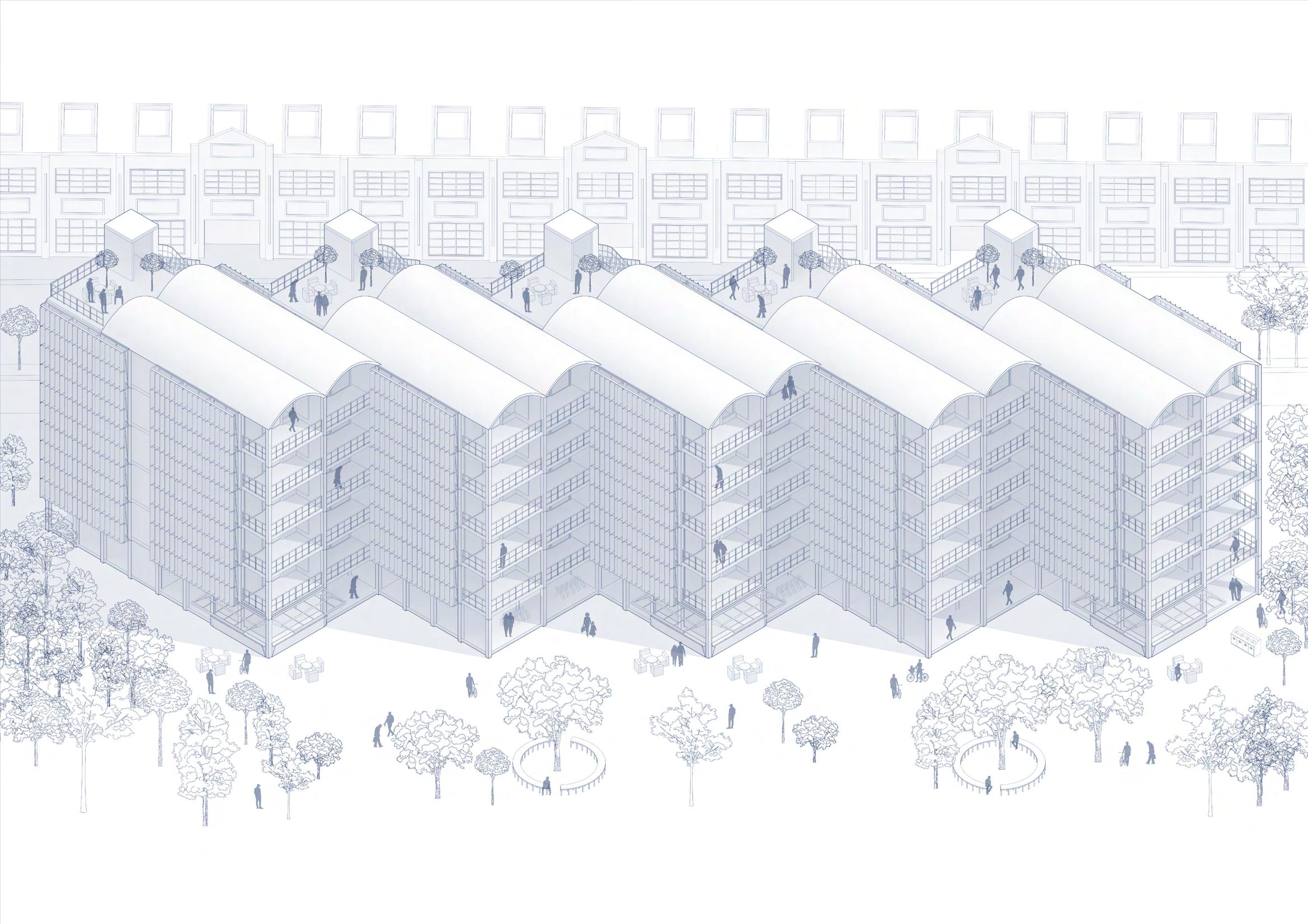
The key strategy for the remediation of the site is the daylighting of Blackwattle Creek. It takes inspiration from ‘Sponge City’ precedents to create a winding creek that mimics the original contours of the site (as seen in current flood patterns studies). The introduced creek will have the function of mitigating flooding by employing stormwater redirection and anticipating sea level increase.
The site currently has hydrological imbalances as it was previously an industrial dumping ground and the creek over time with rainfall will flow out the pollutants of the site to Tjerruing Blackwattle Bay. In supplementation, the reintroduction of the native flora species of Tjerruing (Blackwattle) and Dahl’wah (Casuarina) will attract native bird species and insects to the area and serve its function
2030 SITE PLAN (1:2000)
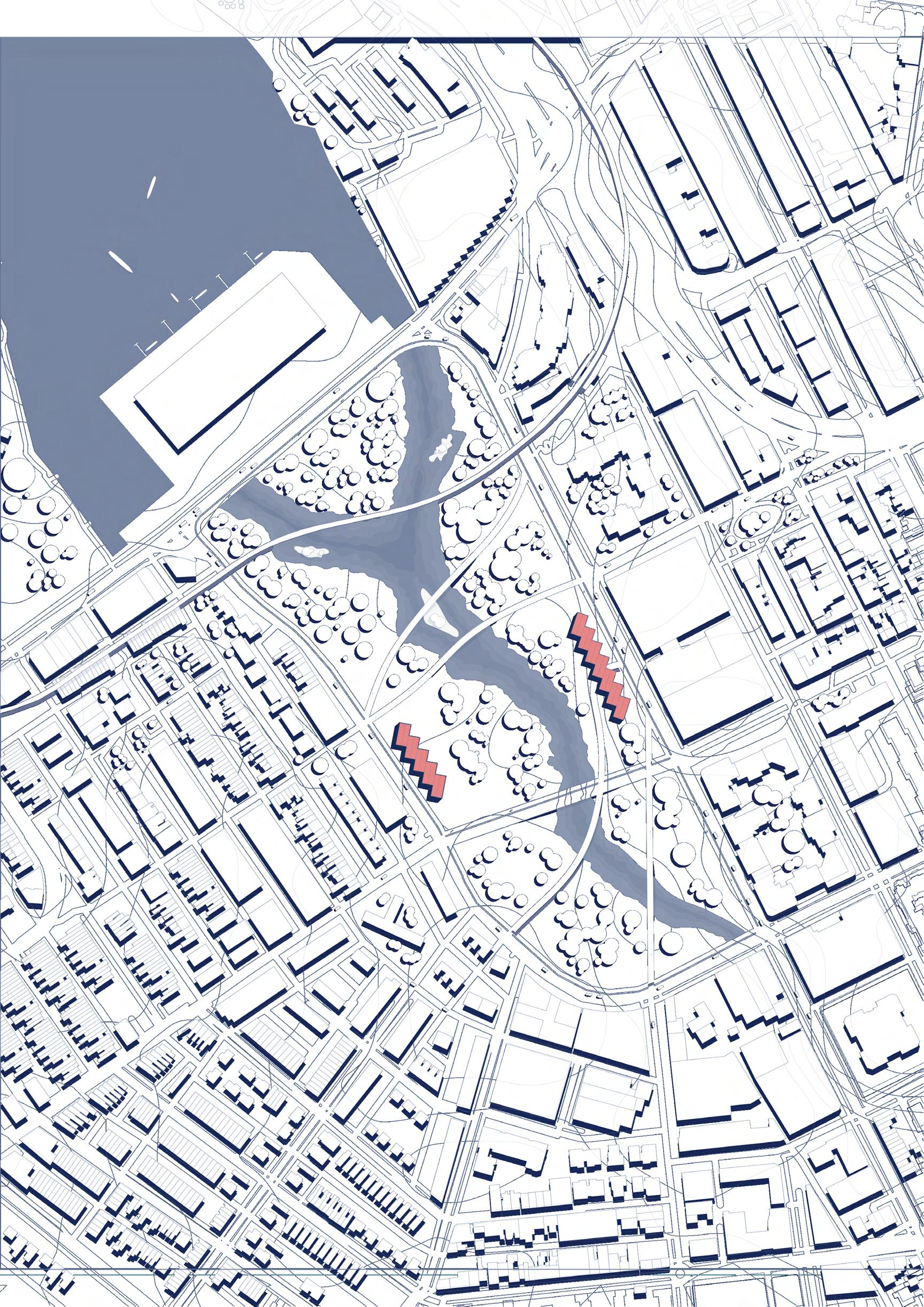
of stabilising the new creek. Indeed, the process of daylighting of the creek and native species aims to heal the site and restore the biodiversity. The mixed-use residential housing buildings parallels the existing streets on Wentworth Park to create an avenue as the ground floor is open to the surrounding residential and commercial areas, ultimately, to provide a connection point for the streets with the park. To further this connection, introduced cycling paths will decrease car dependency and greater connection with multiple paths throughout the park to the surrounding streets. The paths, quite similar to the Shenzhen example, are elevated and made of permeable materials to mitigate flood risk and support drainage systems.
2080 SITE REMEDIATION
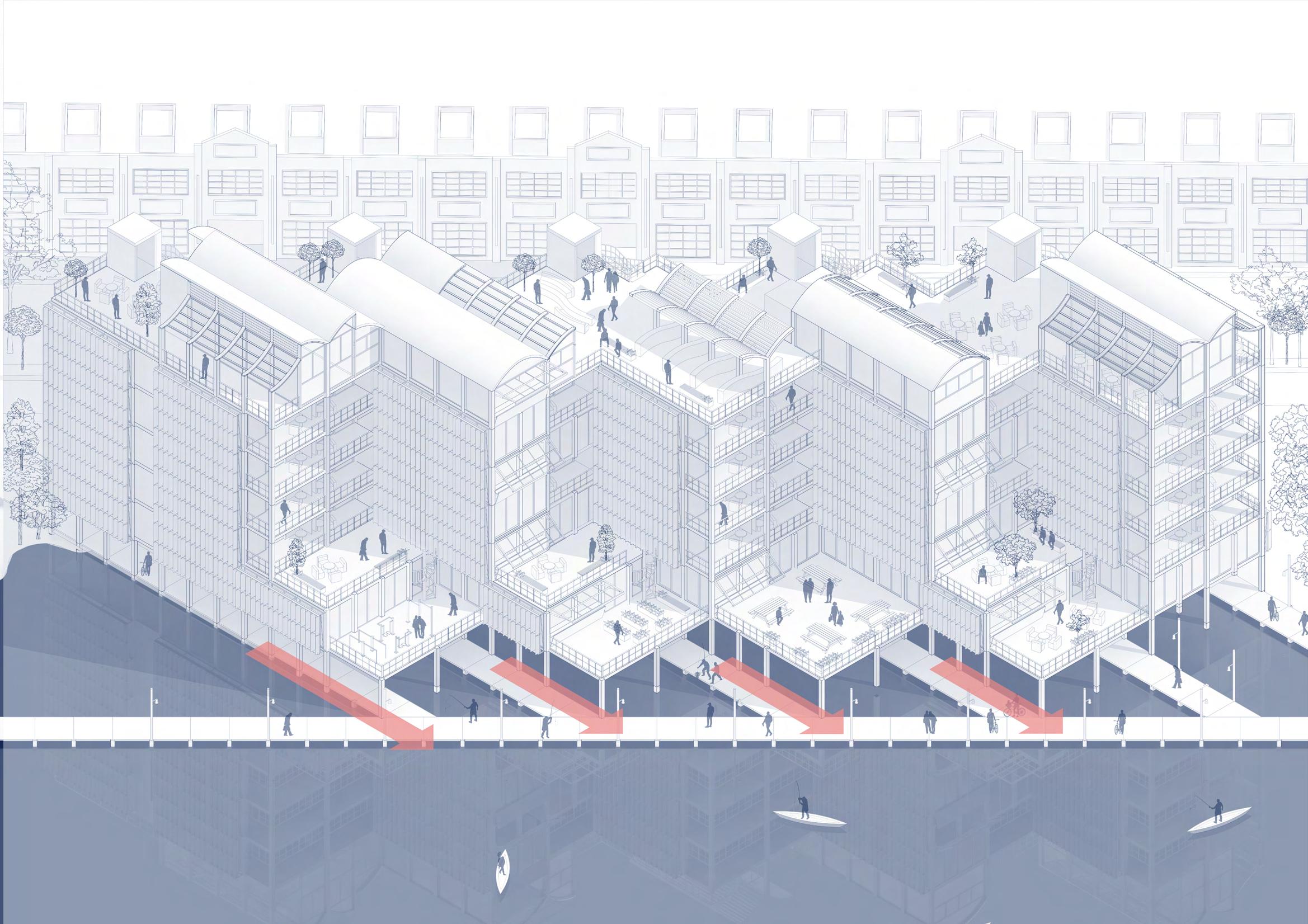
By 2080, it is projected that the site will be severely impacted by the increasing intensity and frequency of flash flooding events brought about by climate change. Due to the constant floods, the ground floor is taken over by water to which it is replaced with a floating pier system as floods rise and fall as the reintroduced Blackwattle creek has settled and expanded into the lower contours of the site.
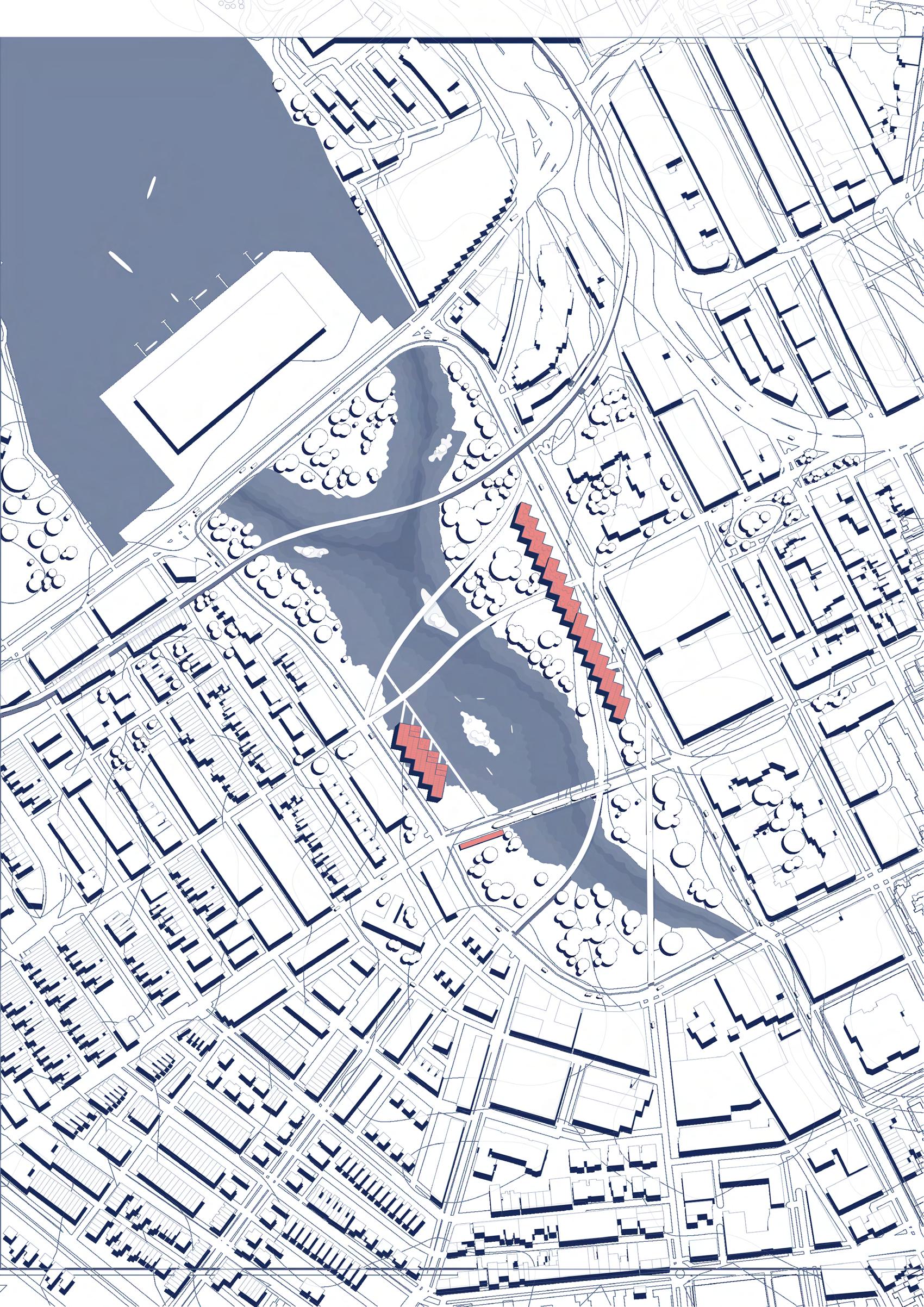
1:200 TIME LAPSE MODEL
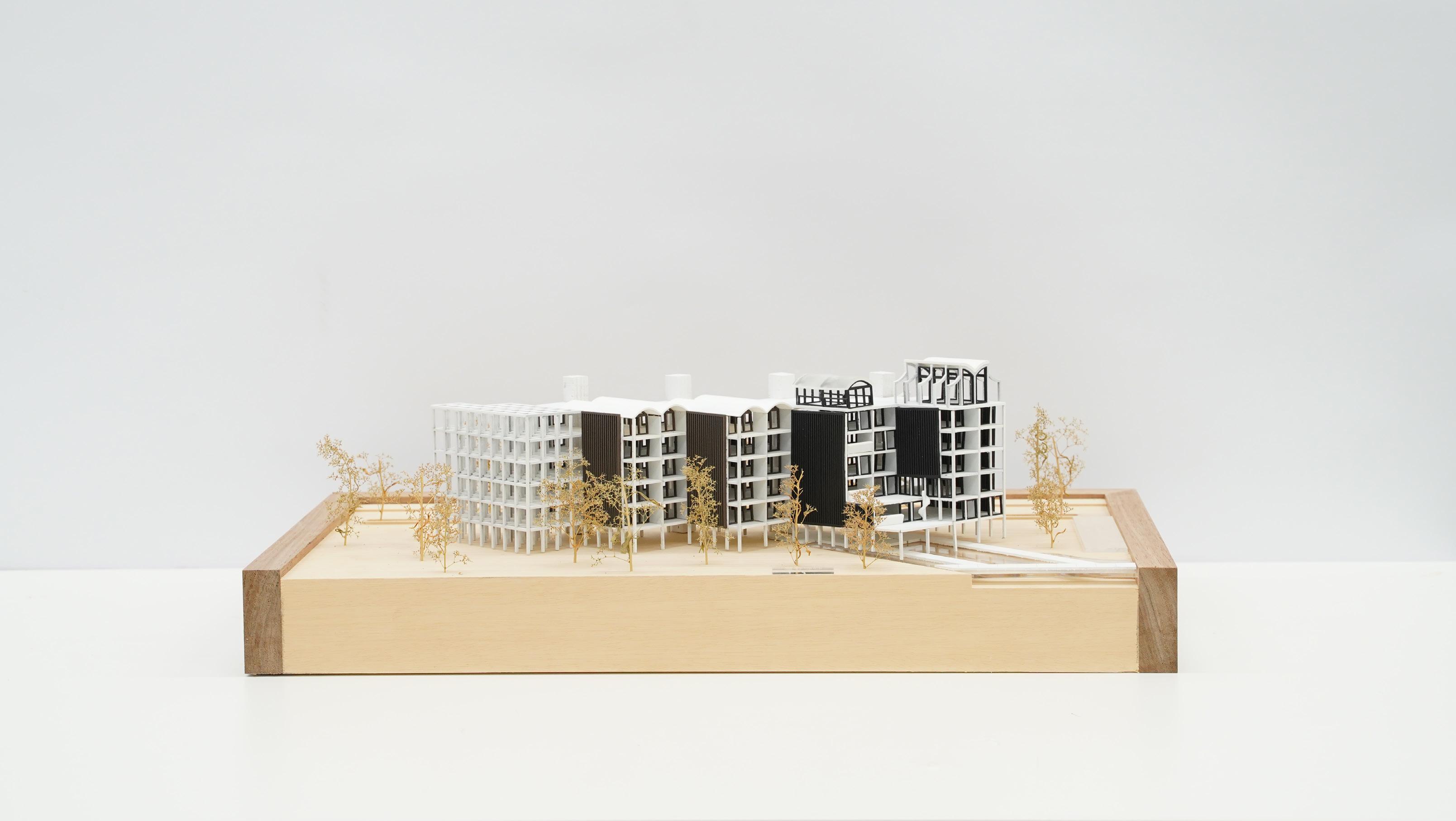
The Communal Space Floor alternates with the Typical Floor Plan and acts as a connection zone for residents.It is in the medium tier of privacy with communal interaction as it can only be accessed by those residents connected to that specific core. The communal space also includes a single-swing hydraulic louver system that contains a gutter pot holder to bring in the scent of the plants into the communal space with the breeze as well as a bench for seating. As well as this introduction of new elements, it utilises the previous wet areas for a designated assistant bathing area.
The floorplate expands to the North to create a series of terrace balconies that is
1:200 TIME LAPSE MODEL (LEFT) 1:1000 SITE MODEL (RIGHT)
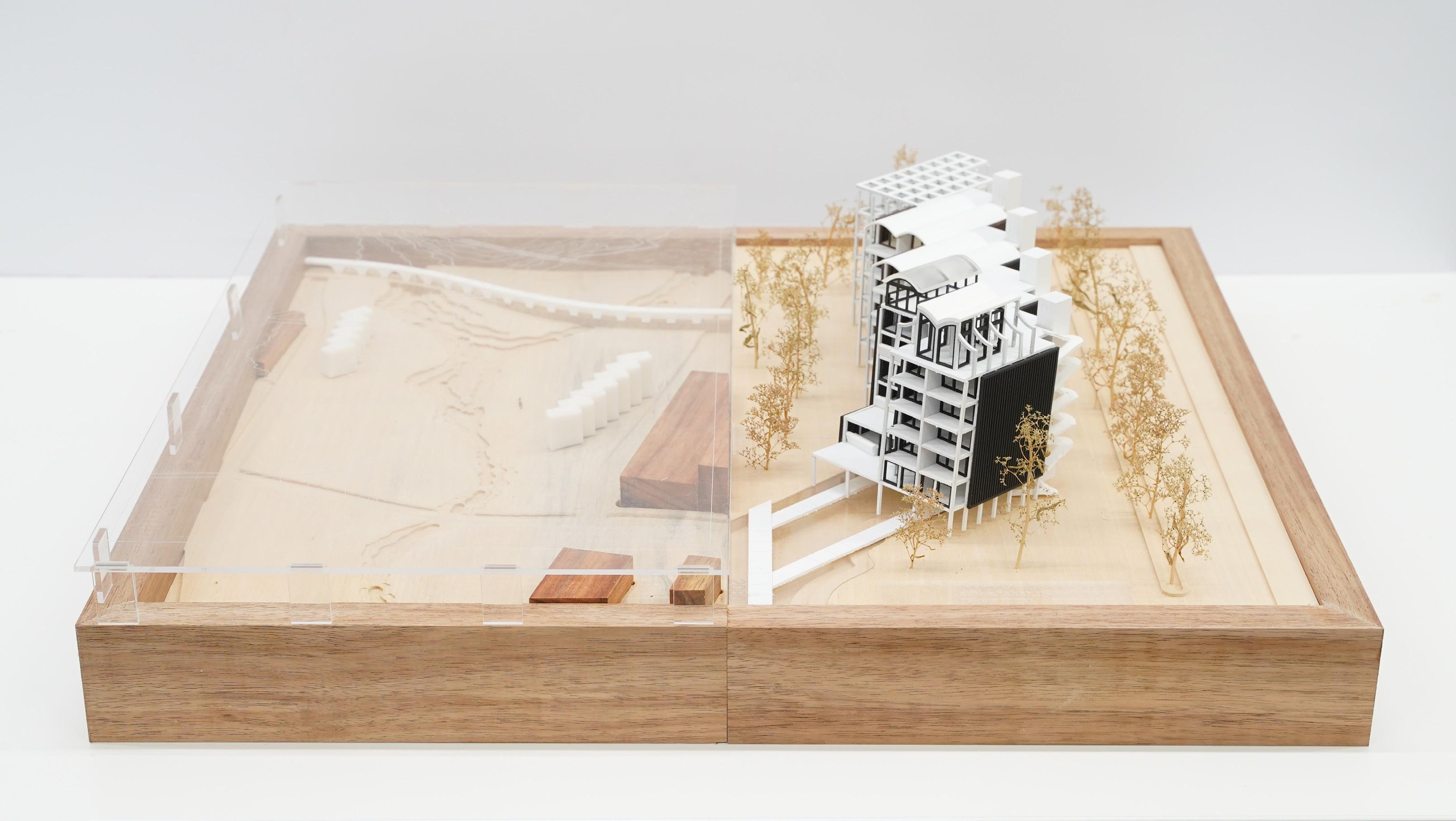
connected to spaces below with a spiral stair that encourages incidental activity with the continuous use of stairs for residents.
With the flooding of the site, the public amenities of the Ground Floor of 2030 will go to the rooftop and nature will take over the Ground Floor of 2080. The Ground Floor is converted into a pier deck that connects with the elevated pathways of the expanded creek, to continuously connect surrounding areas as well as the celebration of the flood changes. With the instance of the creek flooded, sunlight from the North would reflect on the water to create caustic refractions on the grid ceiling above.
1:20 POLYVALENT STRUCTURAL MODEL
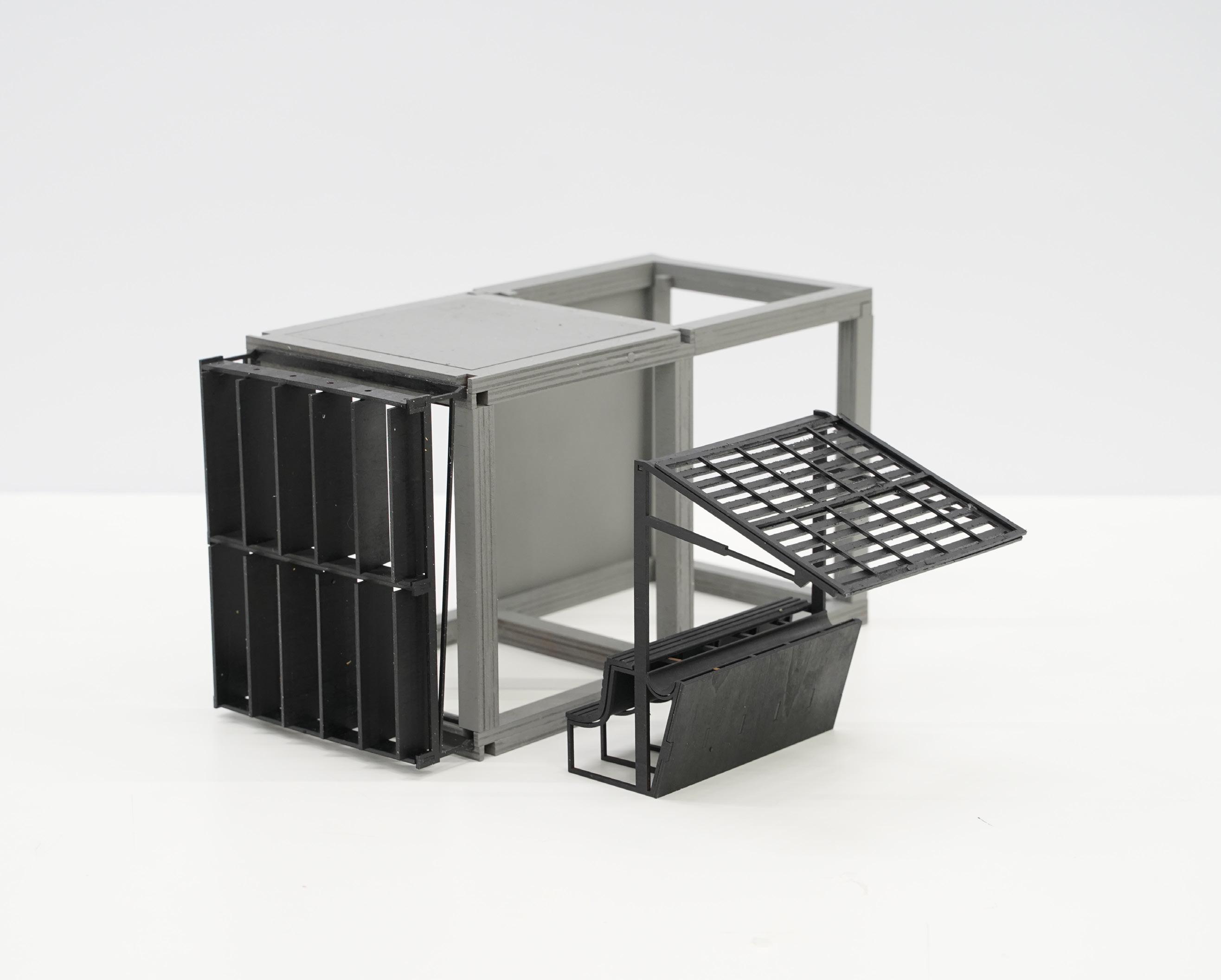
The primary structural system of the building is a modular beam-and-column grid system; in which they can be removed or added to create new spaces, remove spaces or to further subdivide existing spaces. In supplementation, the secondary structural system is made up of clip-on façades as well as non-structural walls and slabs; it is non-load bearing to maximise flexibility and interchangeability.
The walls and slabs are made of lightweight precast concrete with styrofoam-filled cores for the ease and cost of transport as well as reconfiguration as it is mechanically
1:20 POLYVALENT STRUCTURAL MODEL
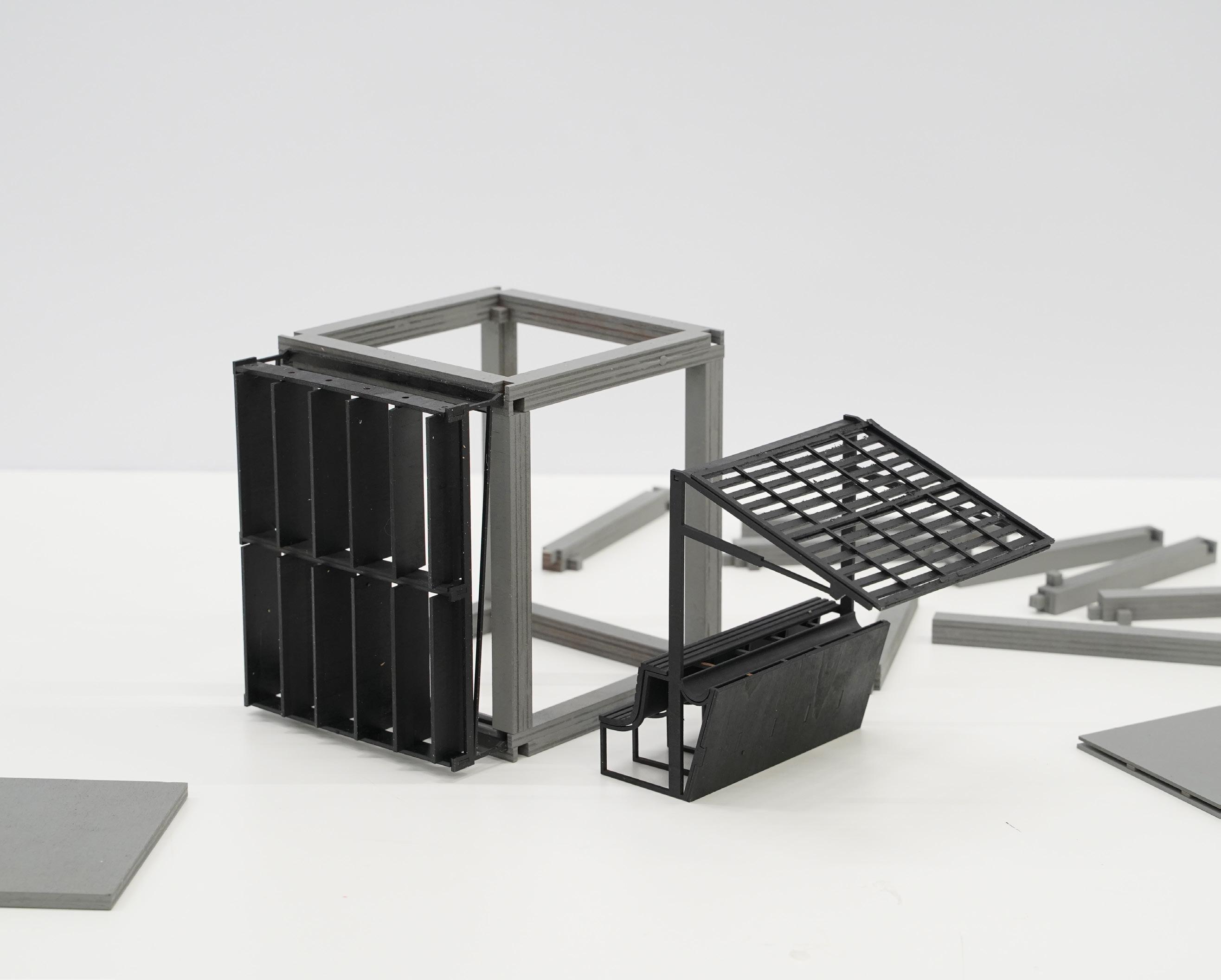
fixed with an interlocking technology. By reason of this, it is quite easy to create spaces or subdivide spaces to allow for reconfiguration by the demands of the user. In supplementation with this, slabs can be added to expand the floorplate or can be removed to create a volumetric interplay with double-height spaces.
Quite similarly, clip-on façades are attached with this system. To which they can be replaced over time for the specific function of the space as well as individual customisation of the block façade over time.
TERRACE PERSPECTIVE
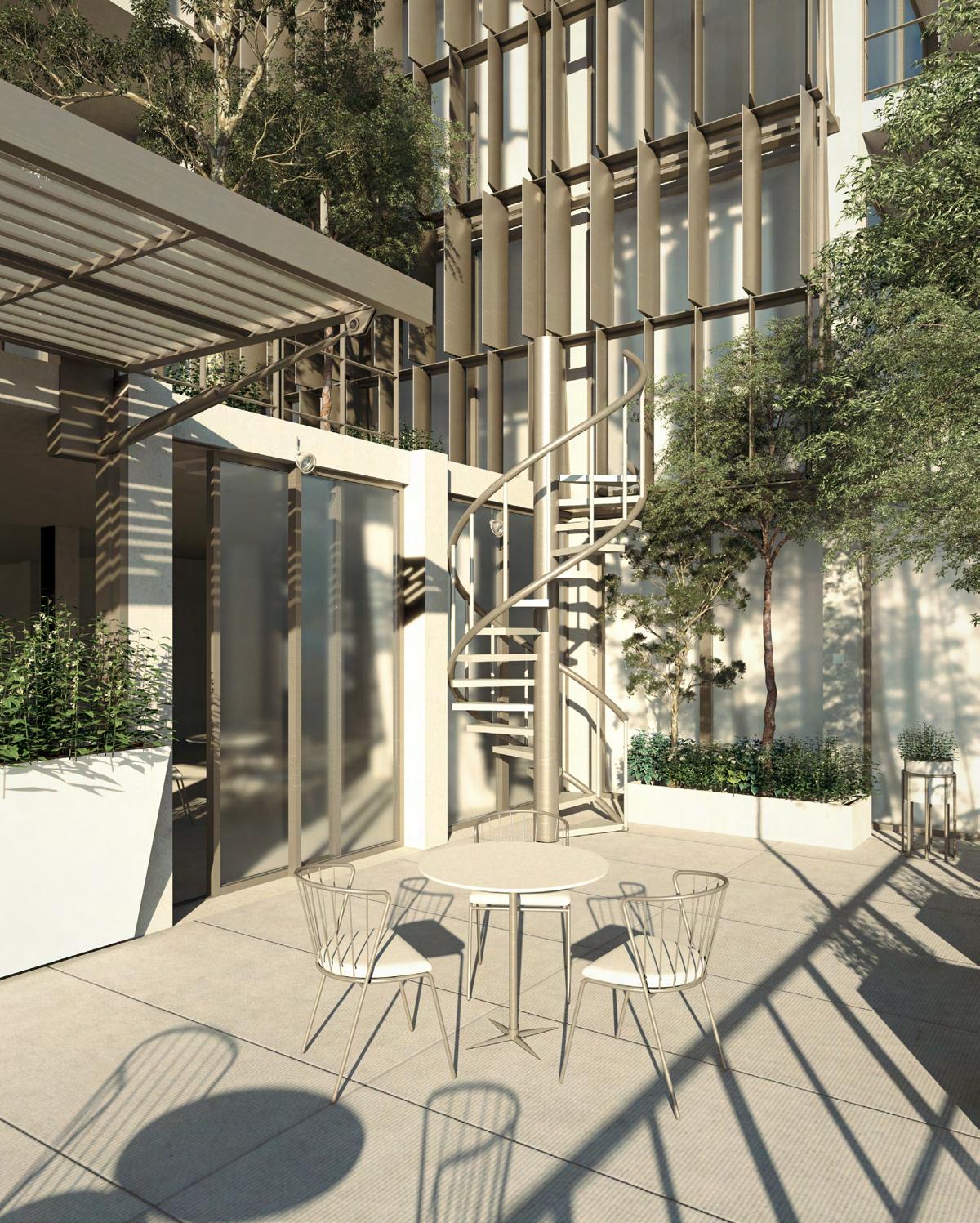
There is a definite uncertainty that pervades the future. As with the unprecedented challenges of rapid technological advancement, climate change and environmental shifts; ultimately, the role of the architect will change. As with such uncertainty in the future, architects cannot merely design for the present. On the contrary, they must accept the inevitability of change and anticipate the conditions of such an uncertain future.
EXTERNAL PERSPECTIVE
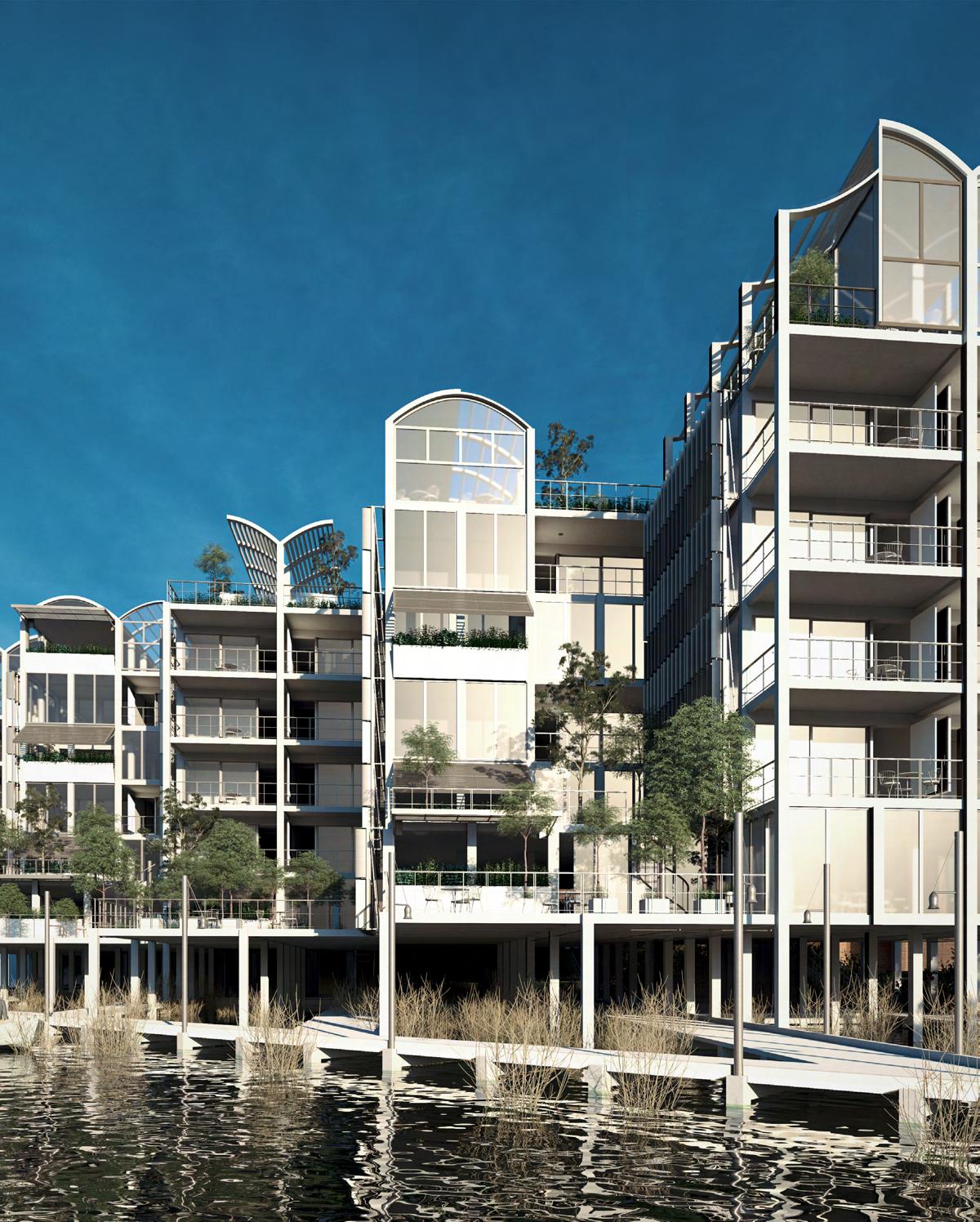
The ambition of the project was to assemble a narrative that exemplifies this notion of how the ancient practice of spolia can be coupled with contemporaneous technology to create an architectural system that can evolve per the demands of its future context. With techniques of upcycling, modular elements, polyvalence and ecological resilience. The project aimed to alter the view of architecture as not merely a permanent static form. But, rather as an evolving living body. Indeed, to go beyond the idea of permanence to accept the inevitability of change by embracing flexibility.
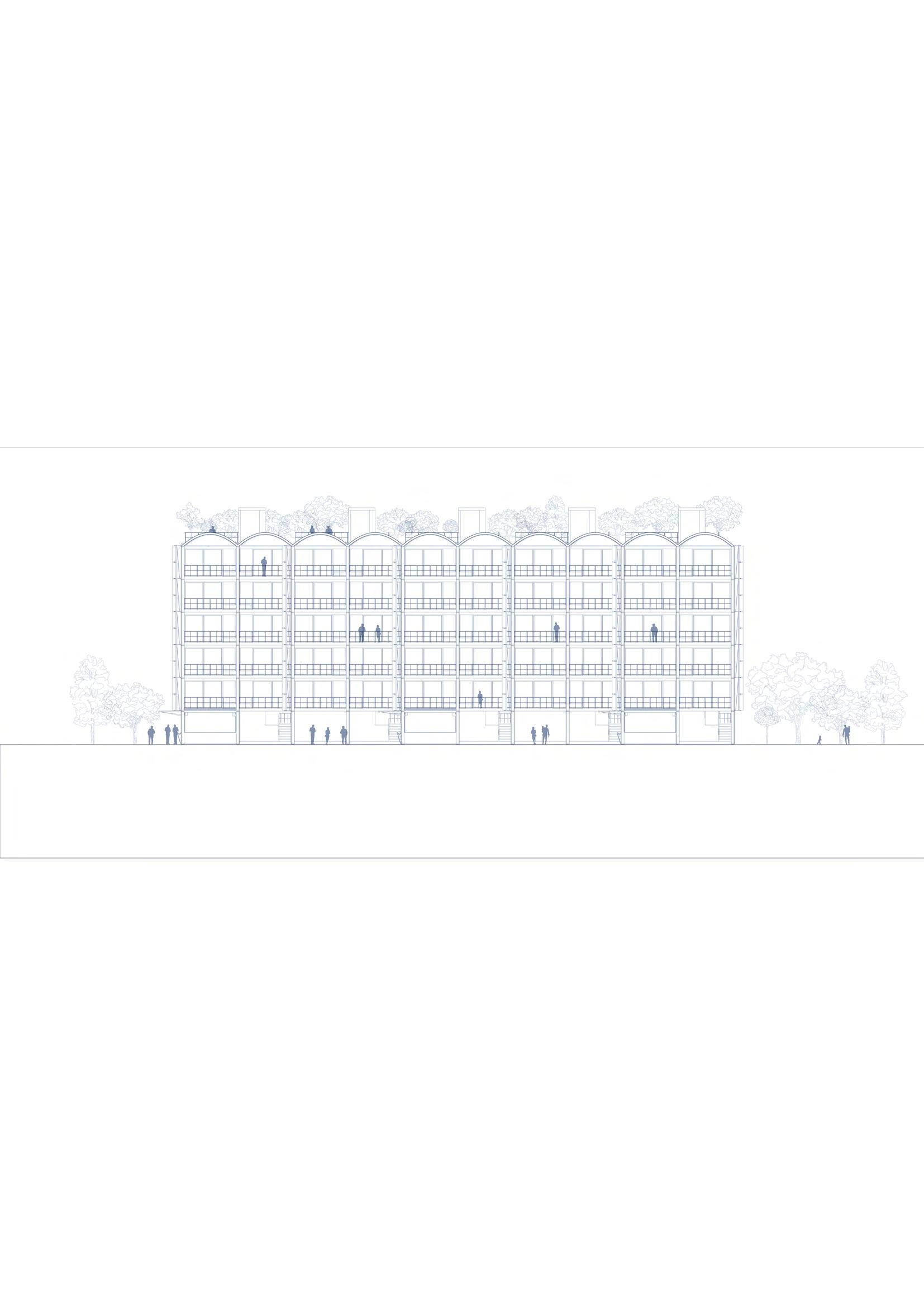
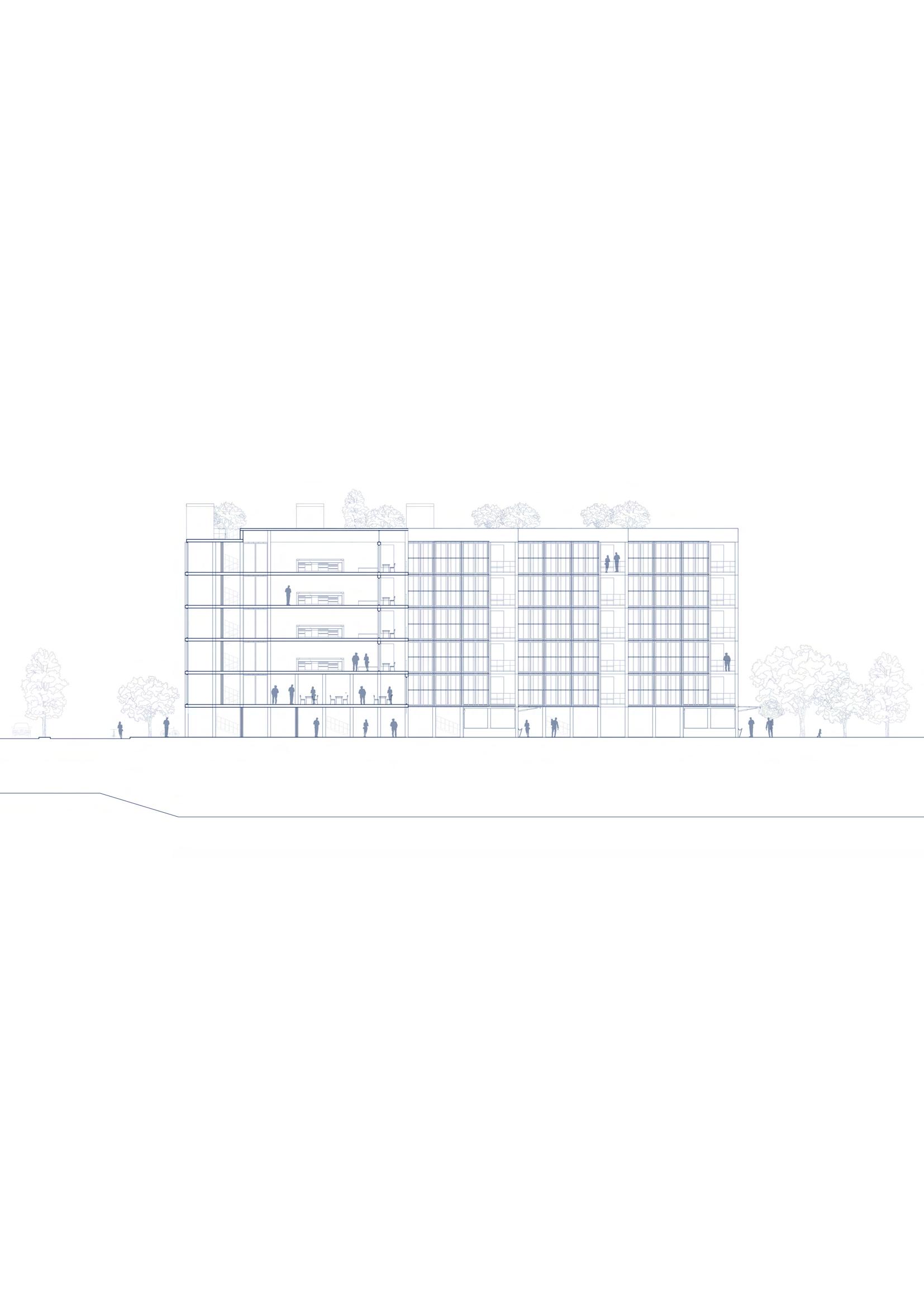
TYPICAL
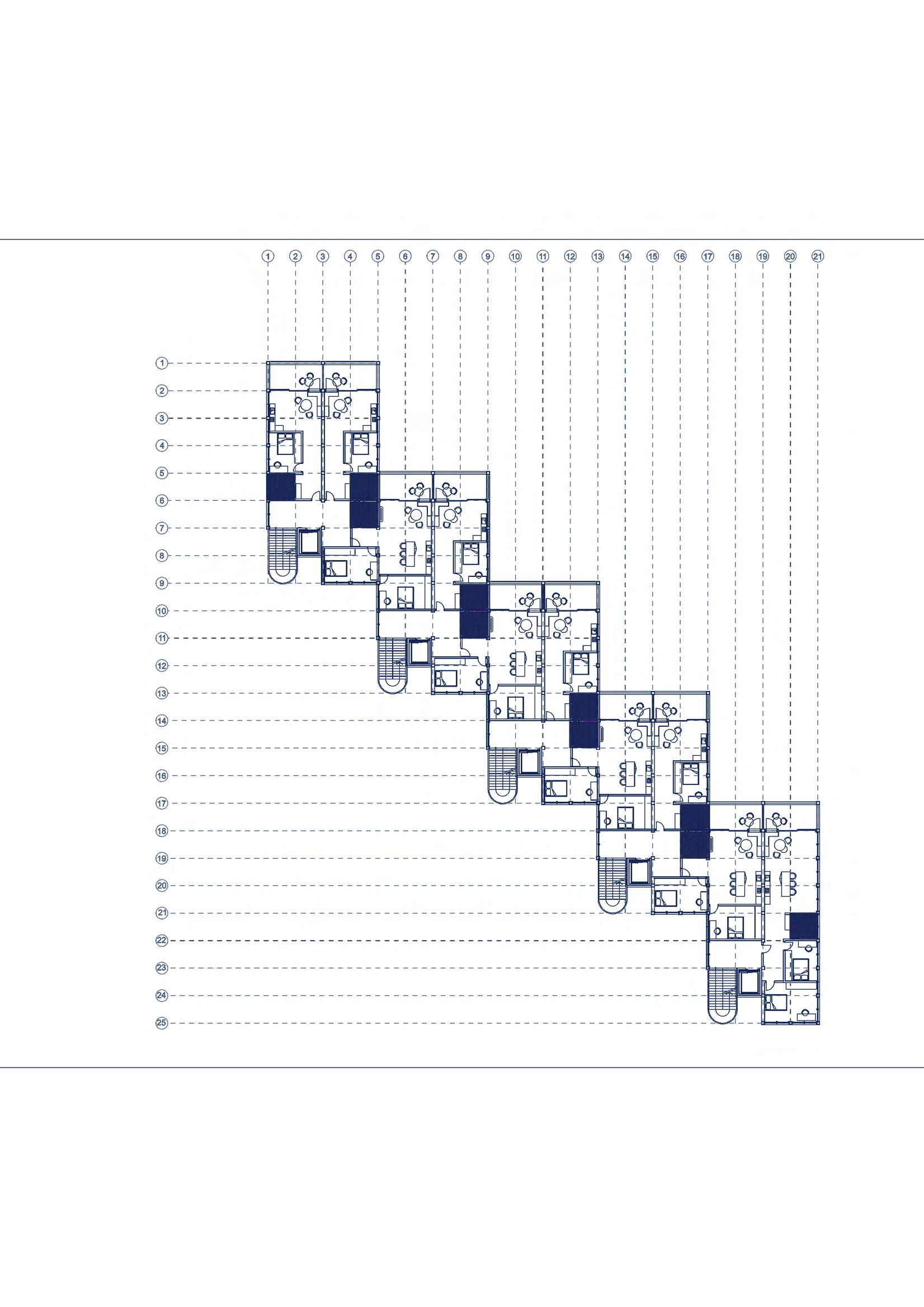
ELEVATION 2080
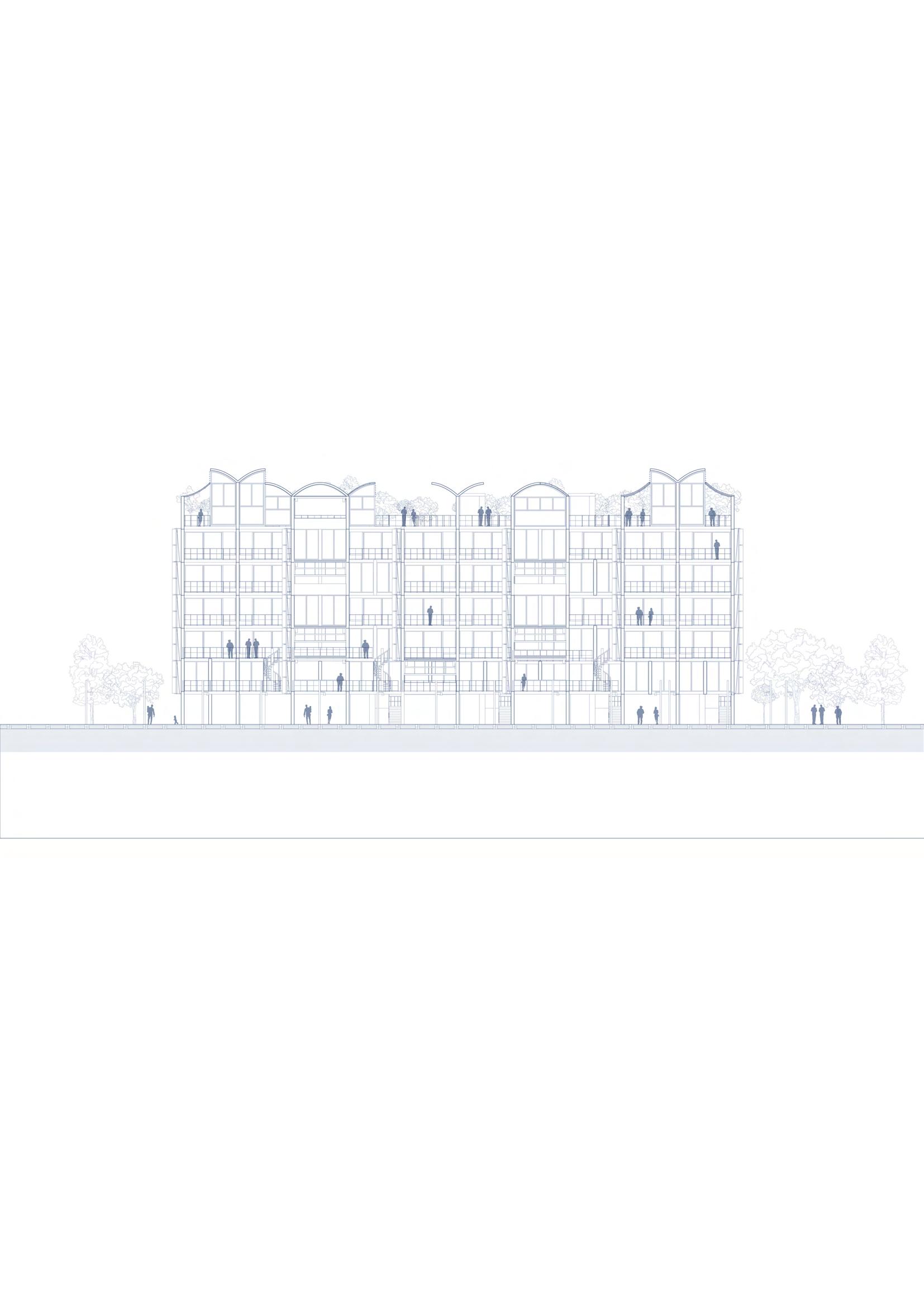
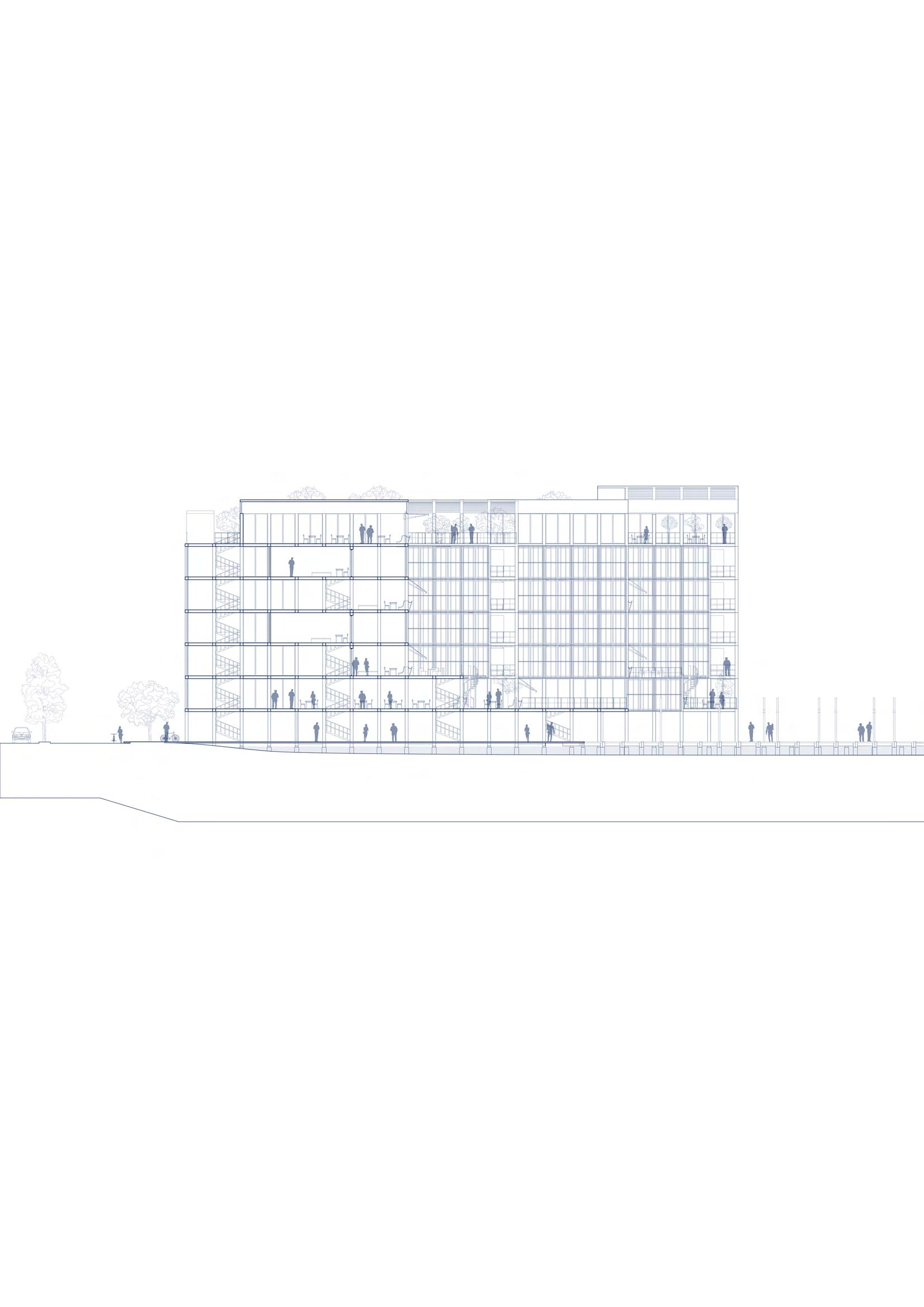
SECTION 2080
TYPICAL PLAN 2080 (1:400)
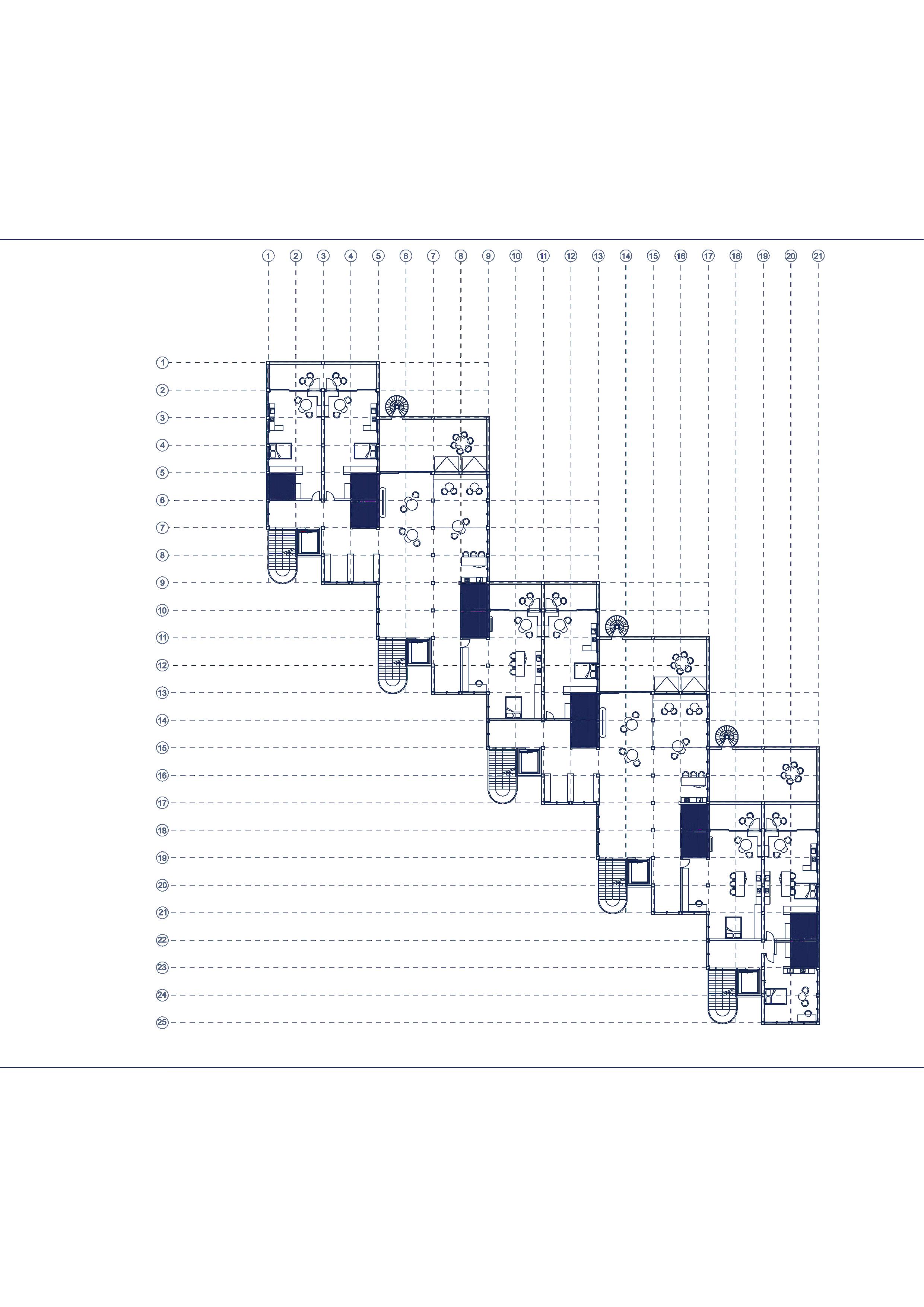
The Communal Space Floor alternates with the Typical Floor Plan and acts as a connection zone for residents.It is in the medium tier of privacy with communal interaction as it can only be accessed by those residents connected to that specific core. The communal space also includes a single-swing hydraulic louver system that contains a gutter pot holder to bring in the scent of the plants into the communal space with the breeze as well as a bench for seating. As well as this introduction of new elements, it utilises the previous wet areas for a designated assistant bathing area.
The floorplate expands to the North to create a series of terrace balconies that is connected to spaces below with a spiral stair that encourages incidental activity with the continuous use of stairs for residents.
PARRAMATTA ROAD STUDENT HOUSING
with Thomas Z. Li || Semester 1, Y1, Master of Architecture
HOUSING FOR ALL WATERLOO
with Sally Shin and Hugh Woods || Semester 2, Y1, Master of Architecture
SPECULATIVE SPOLIA THESIS STUDIO
Semester 2, Y5, Master of Architecture
